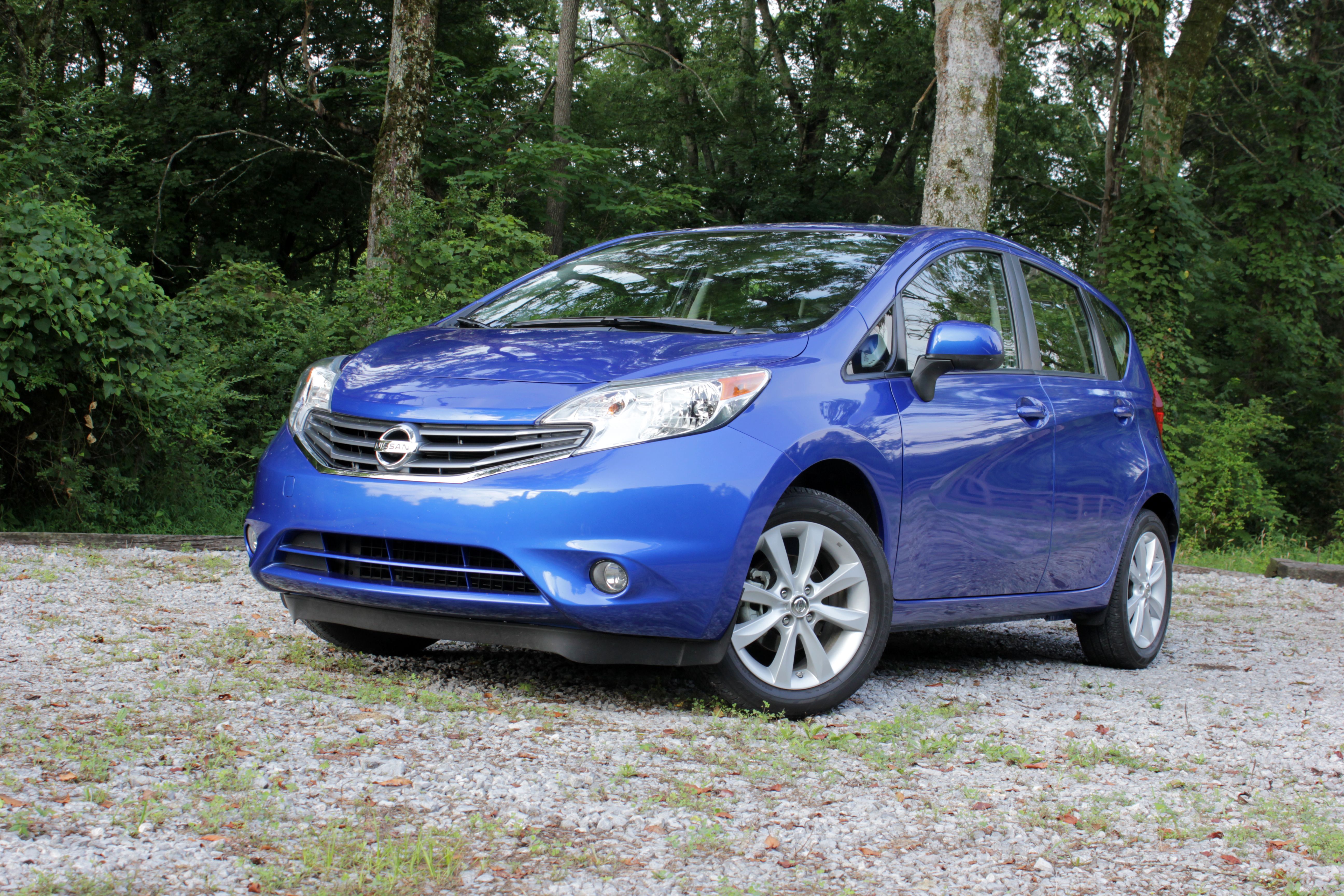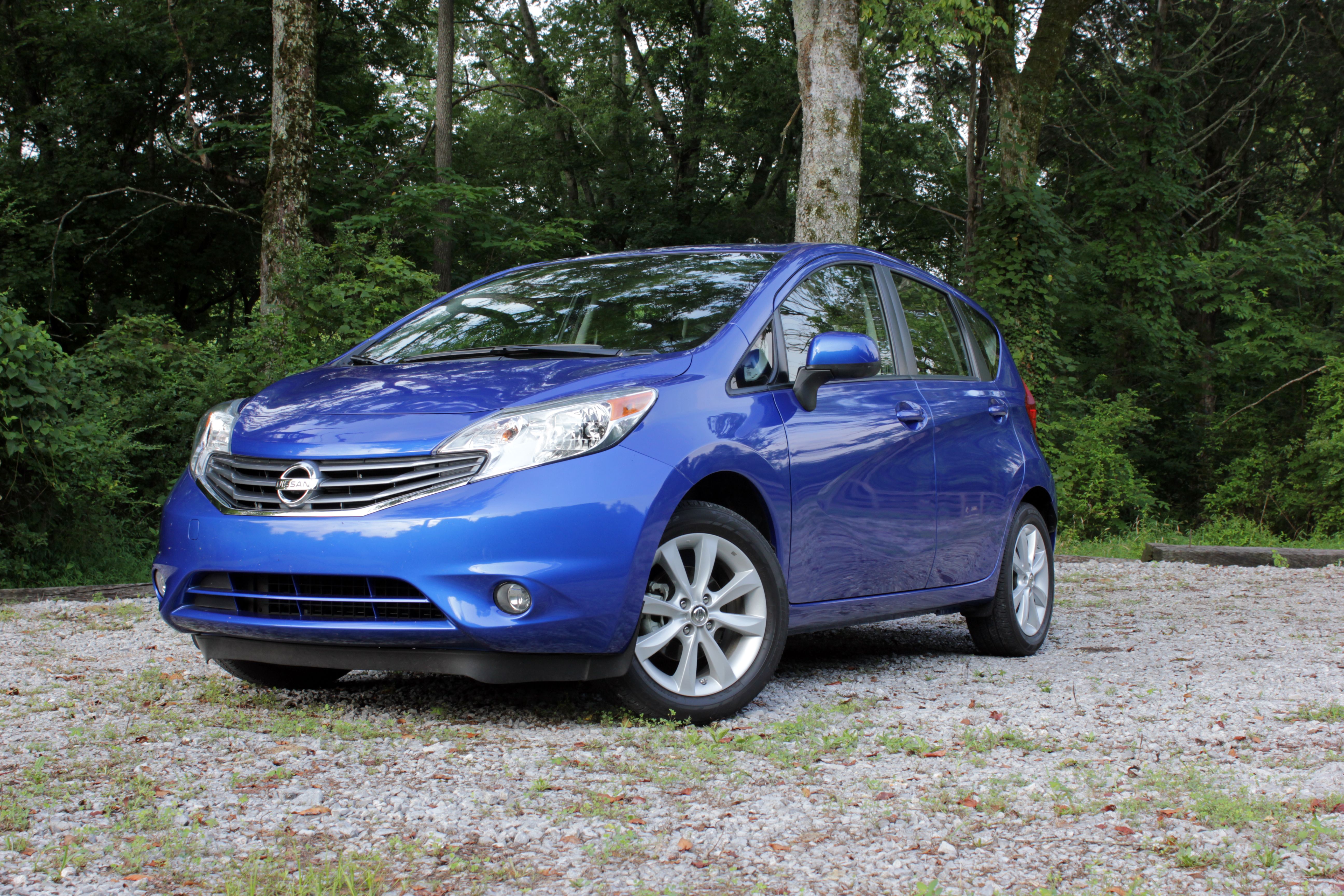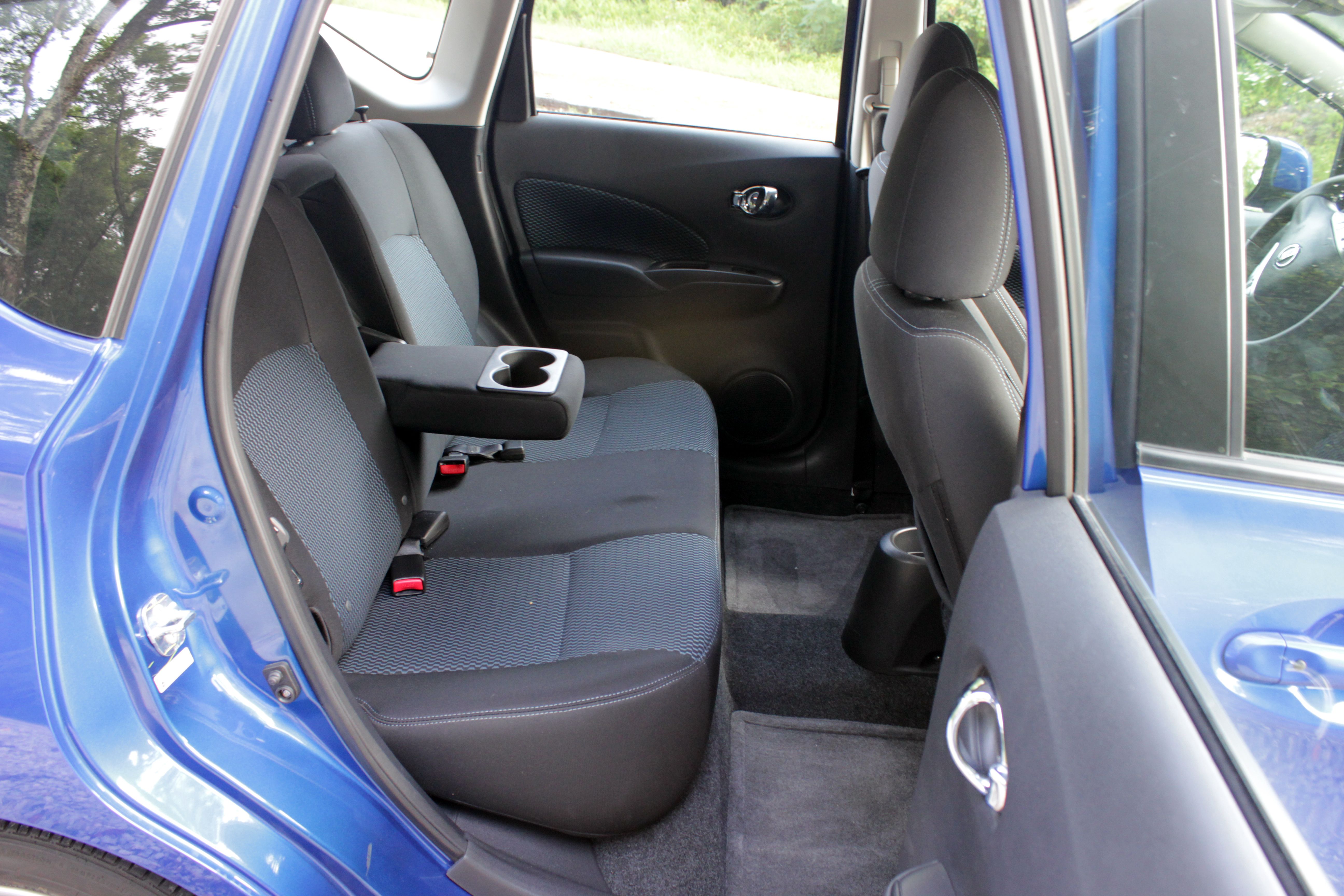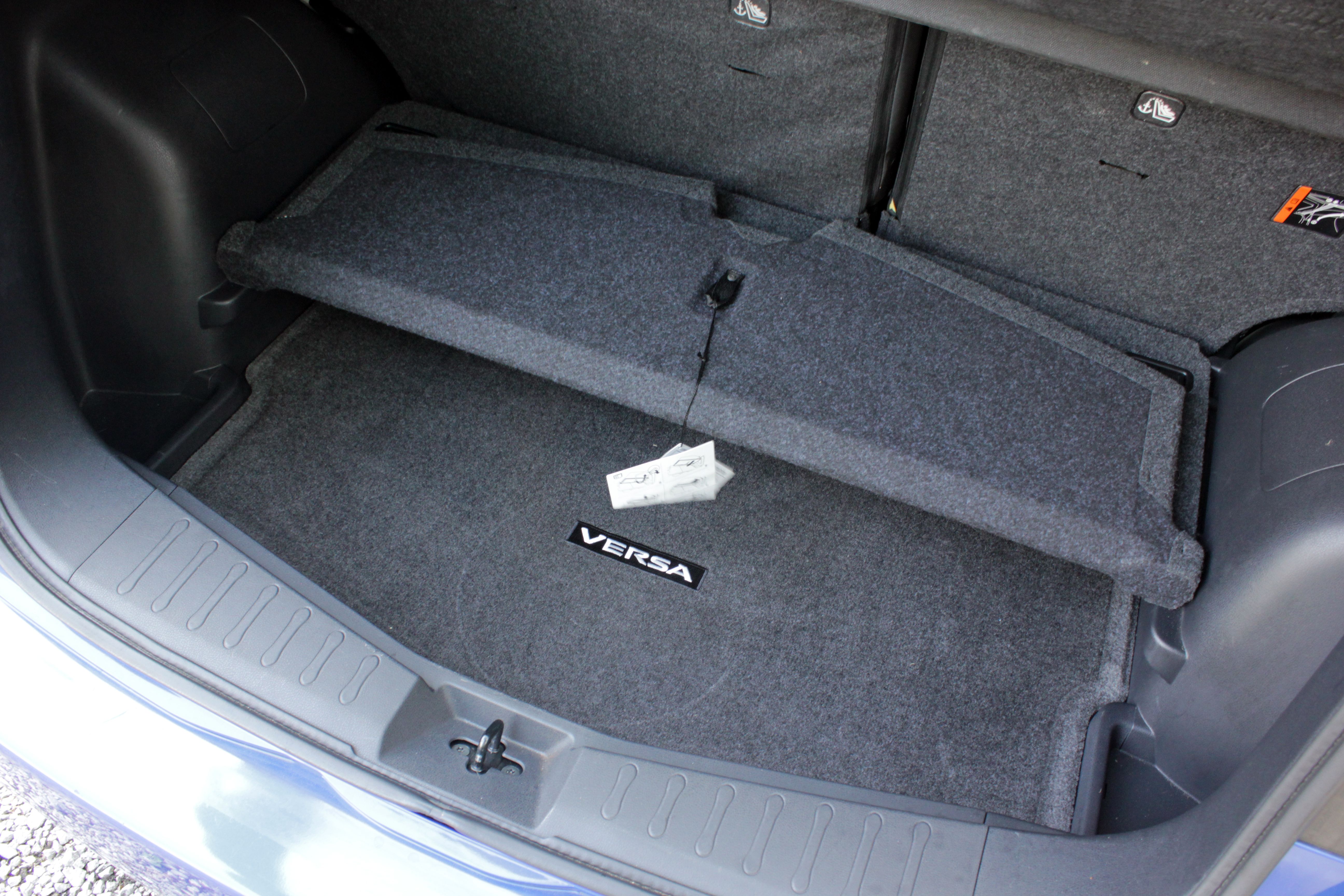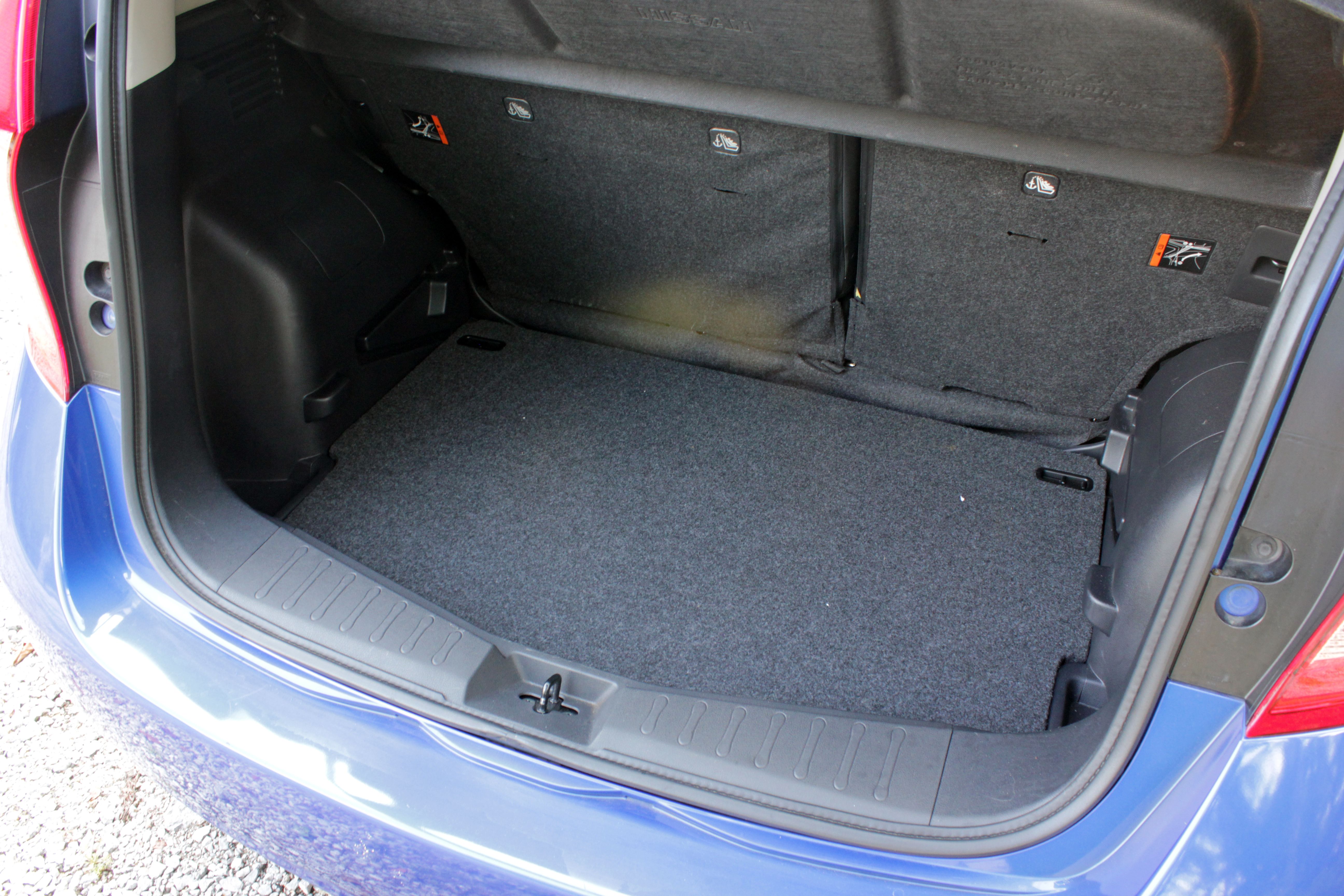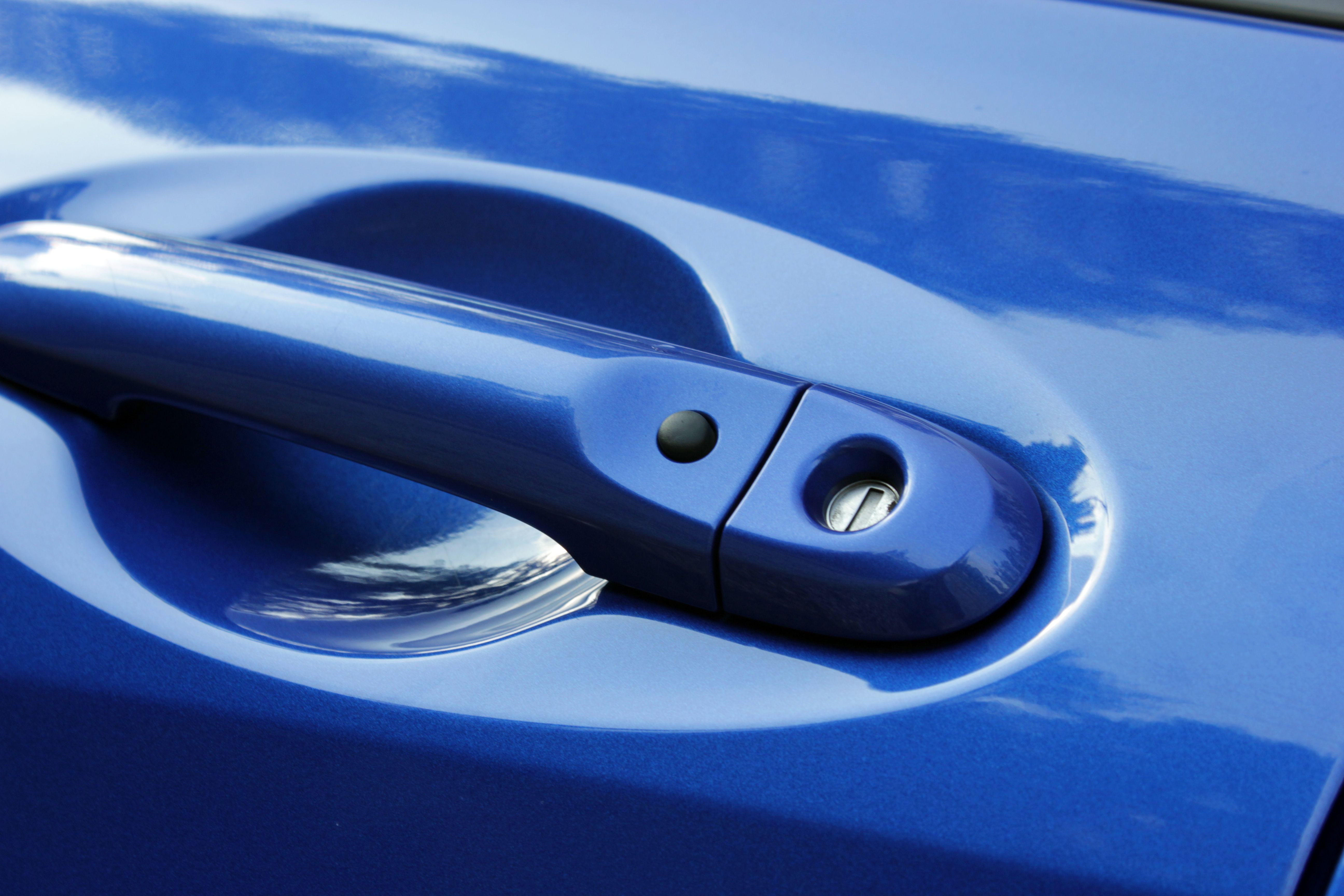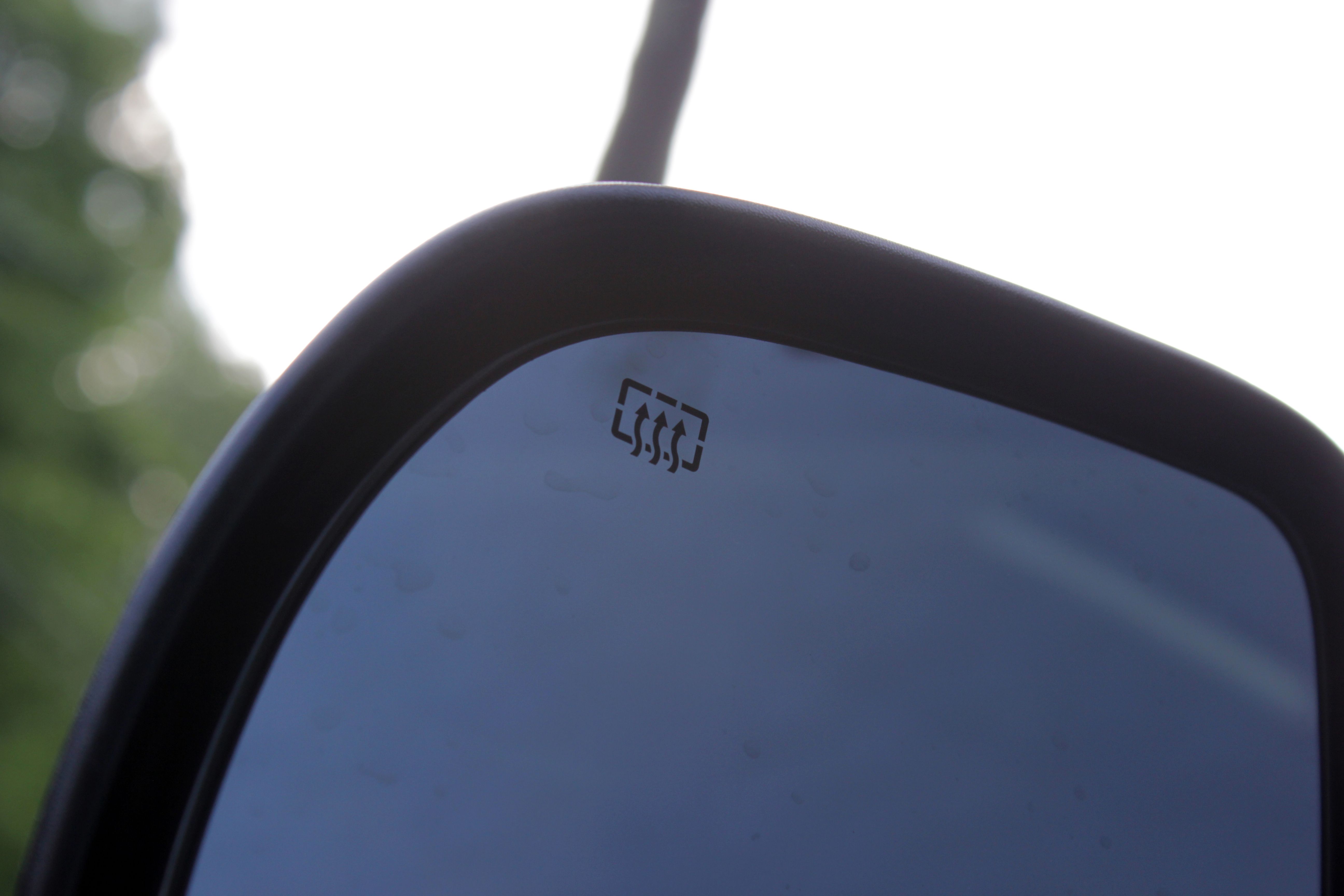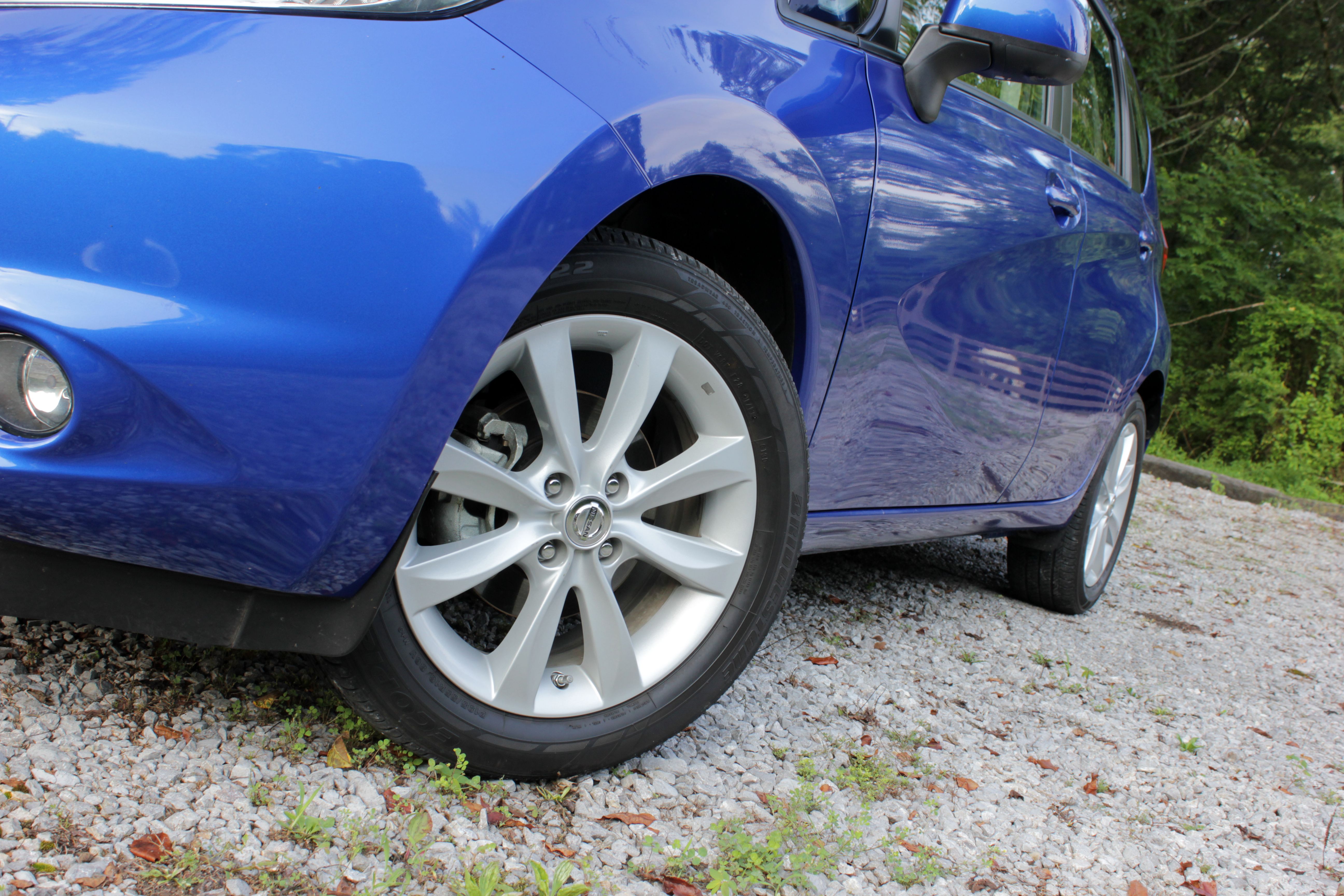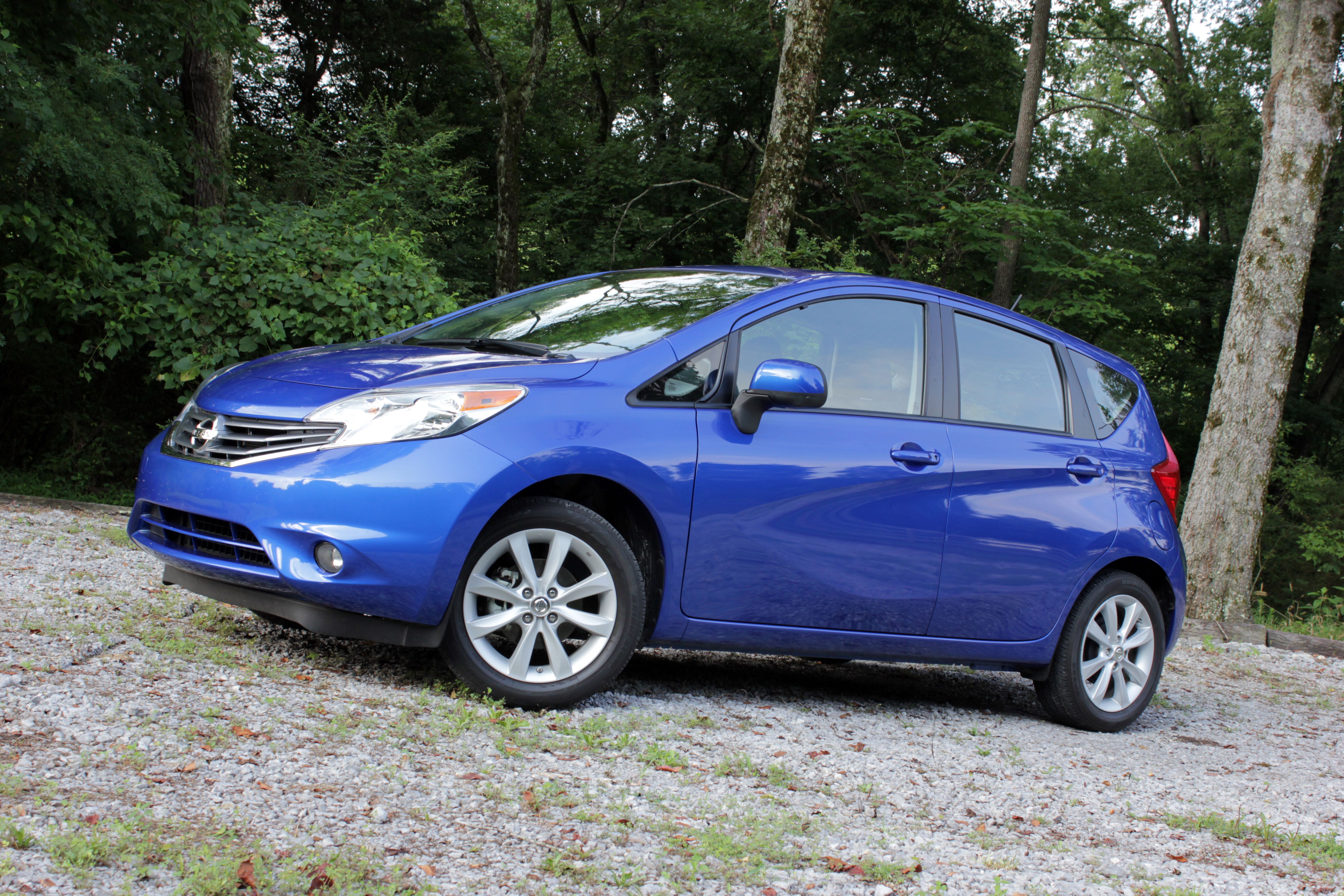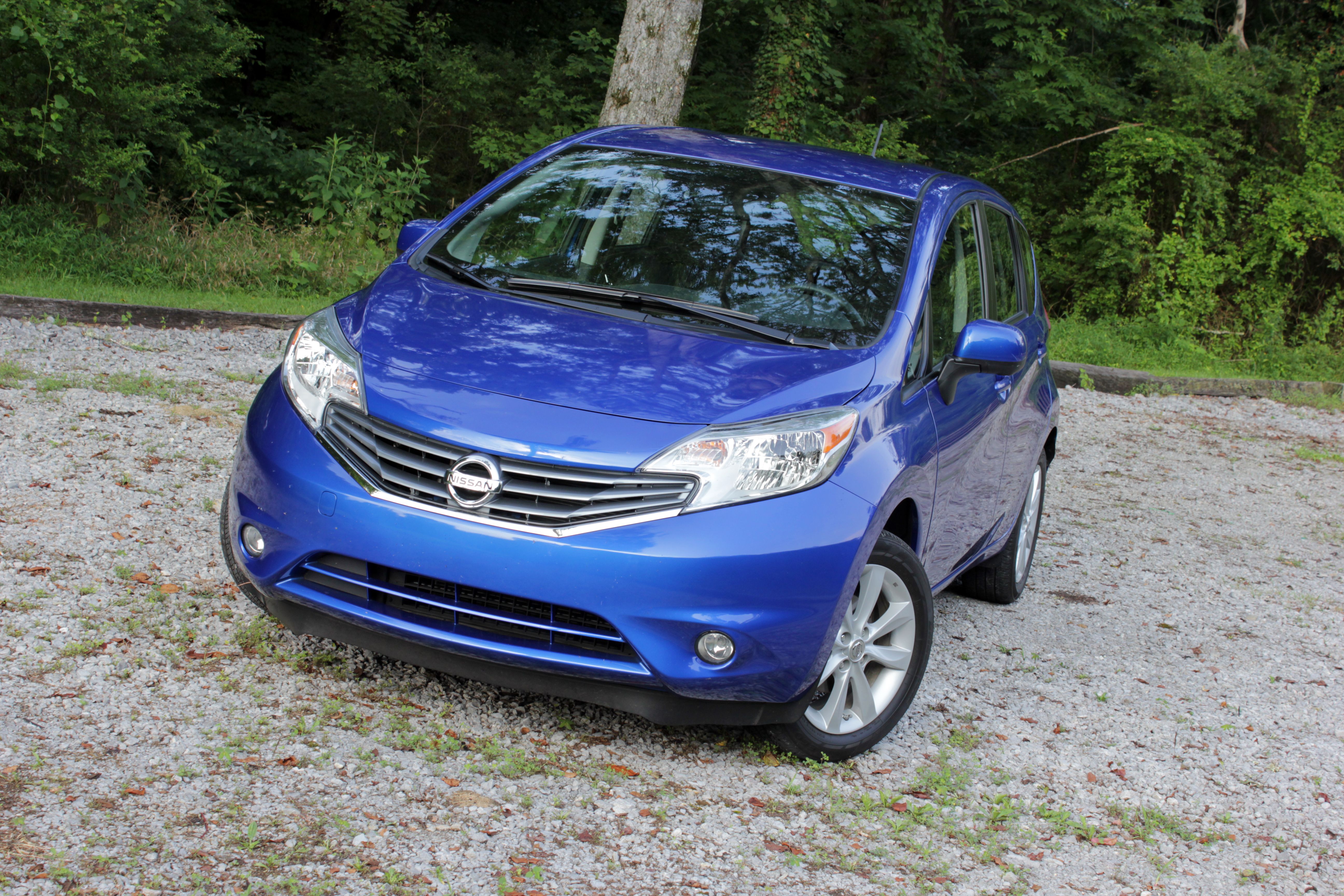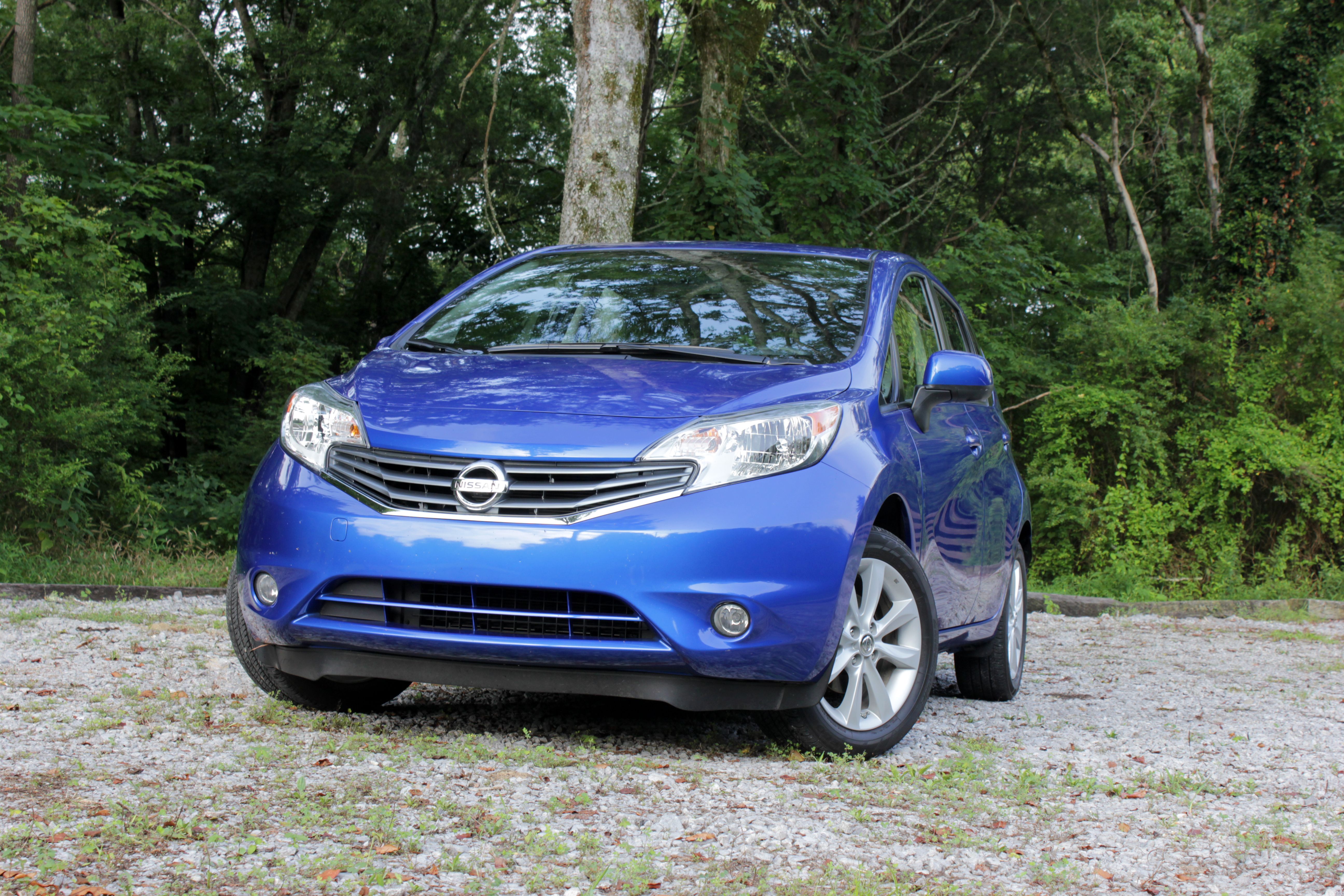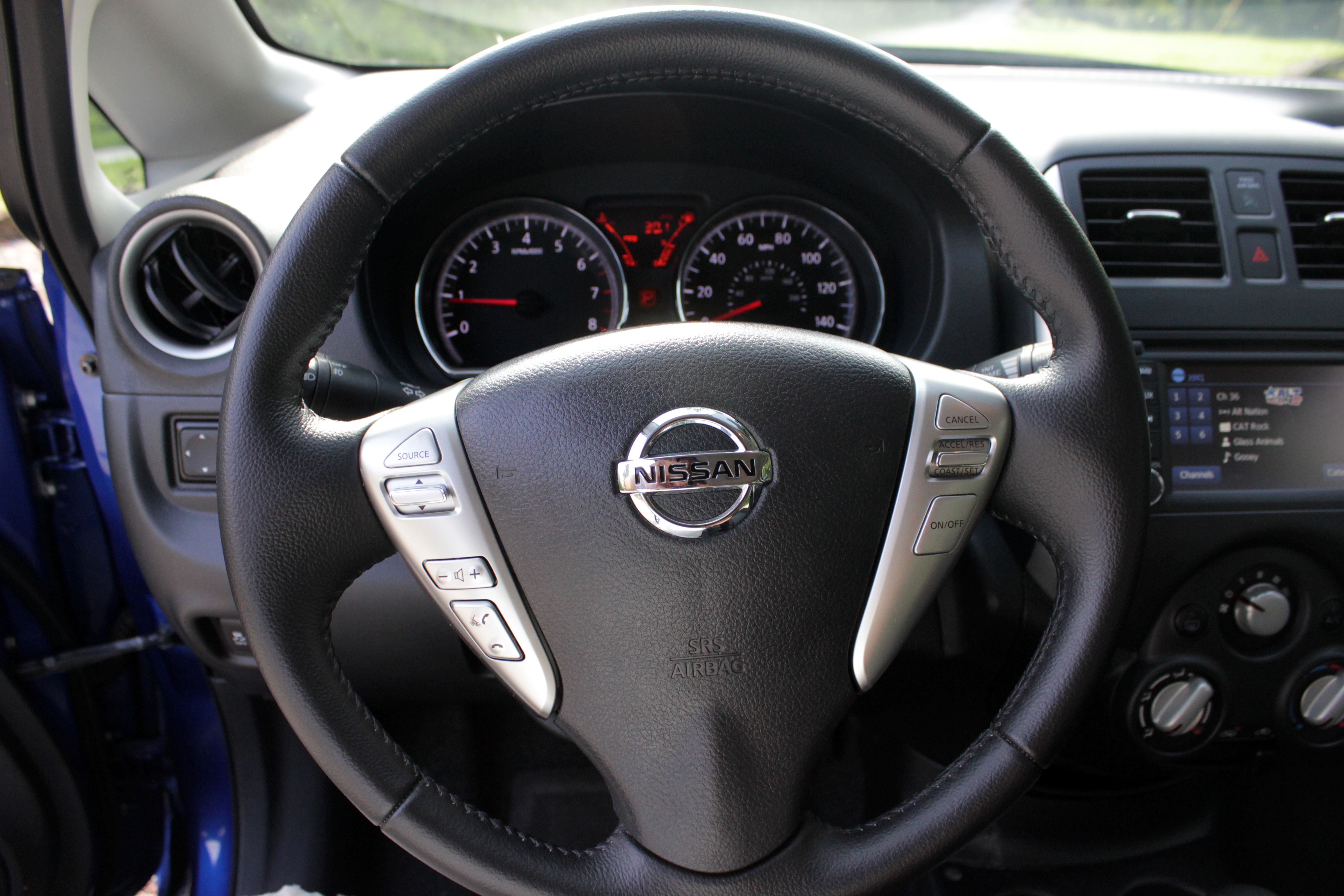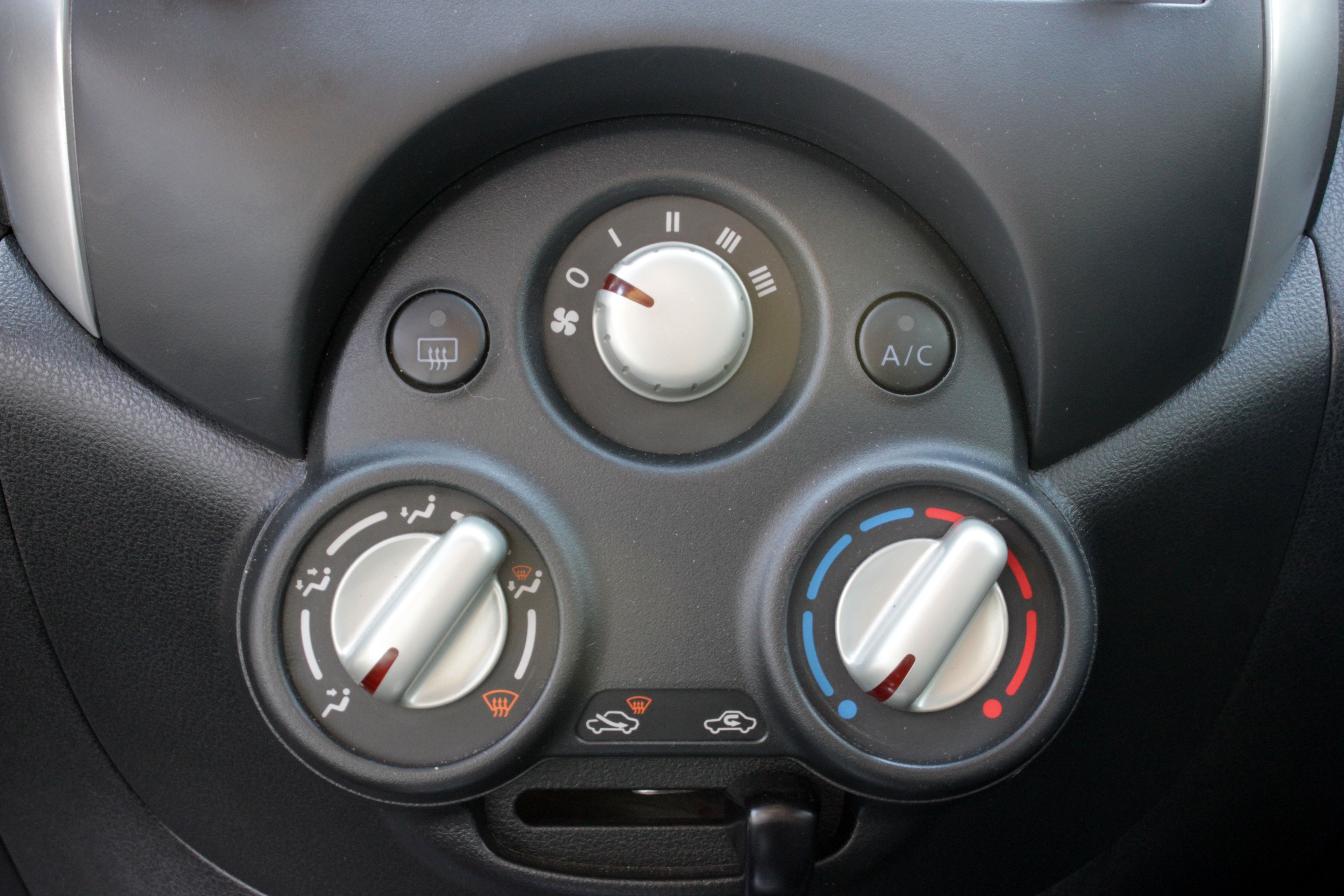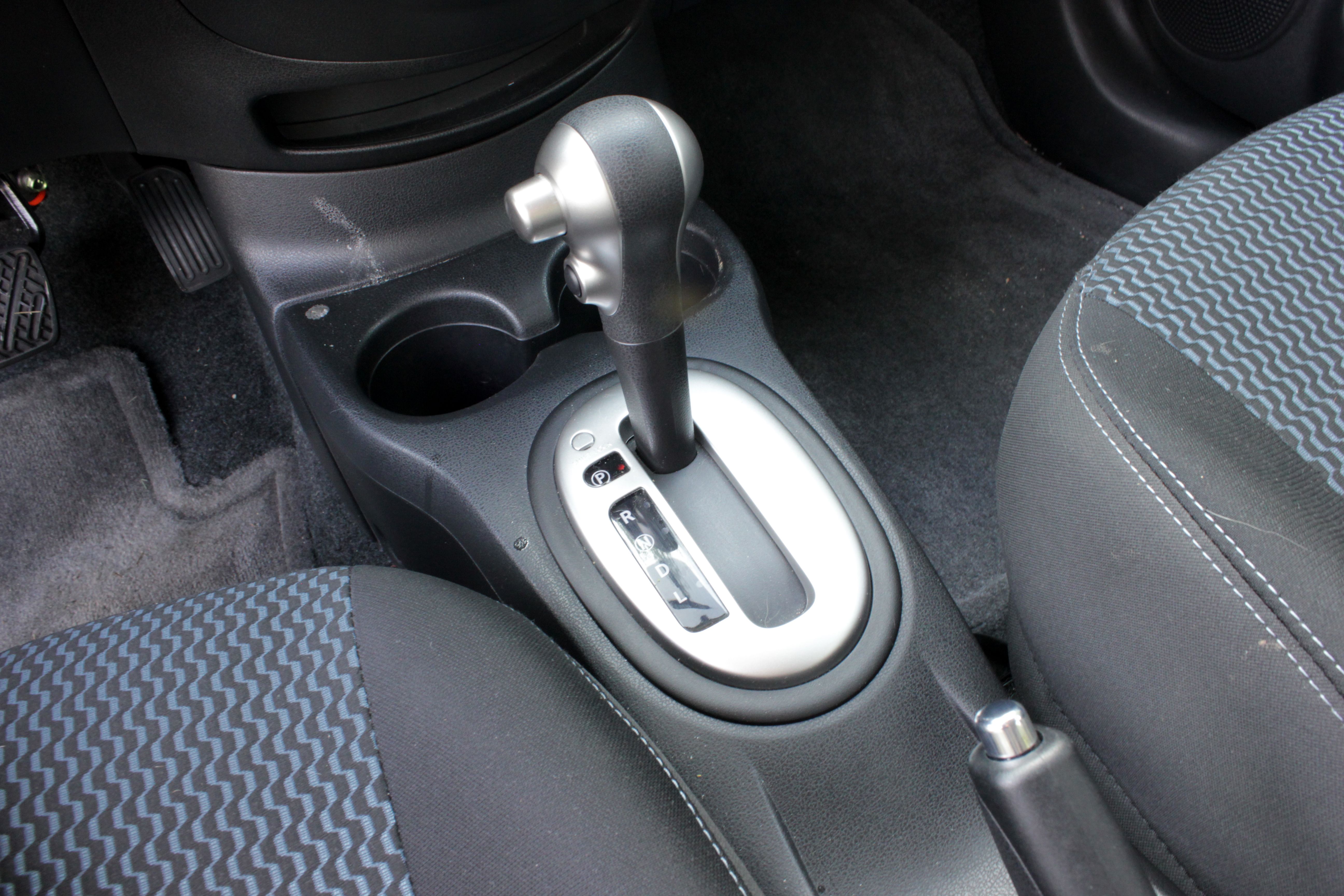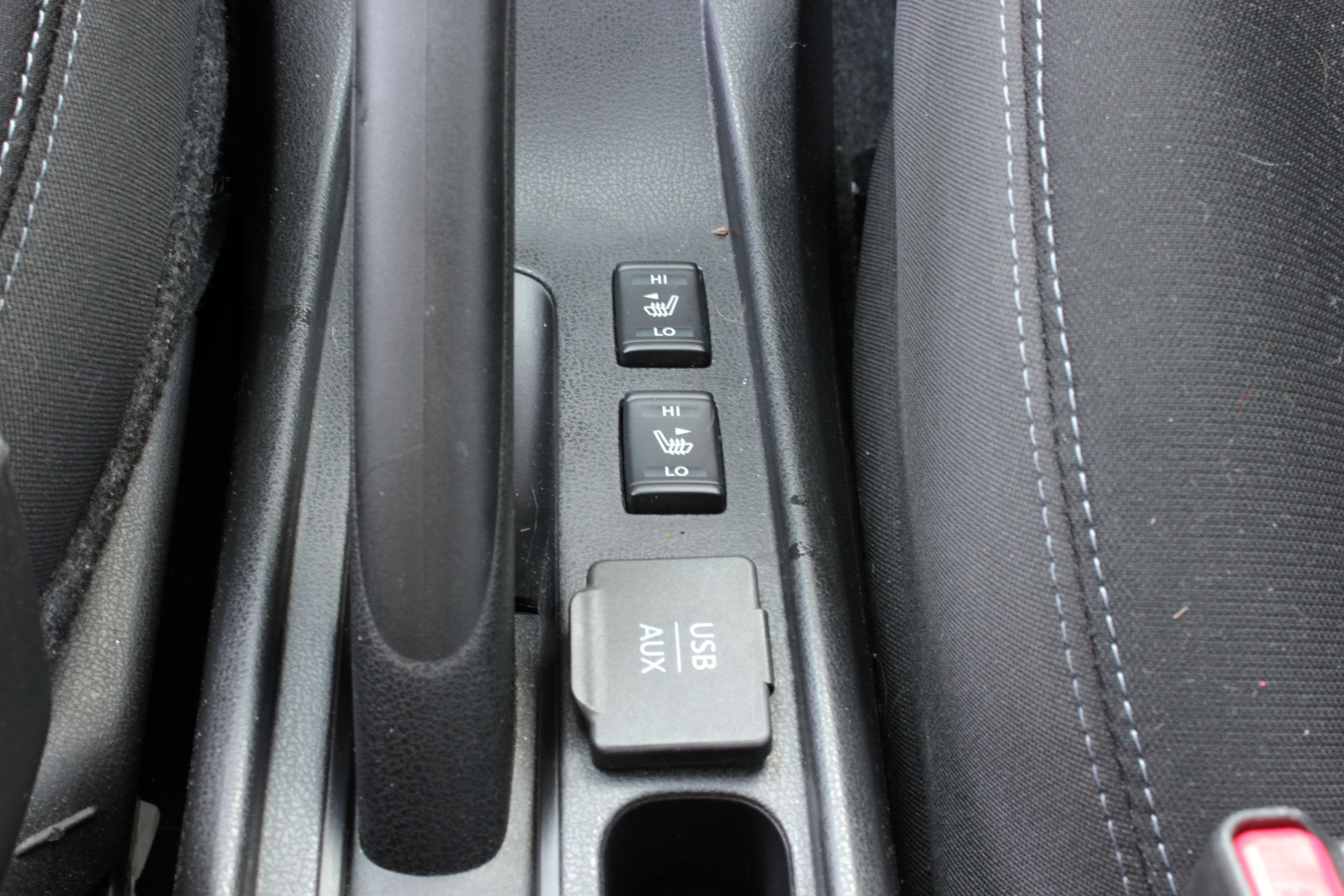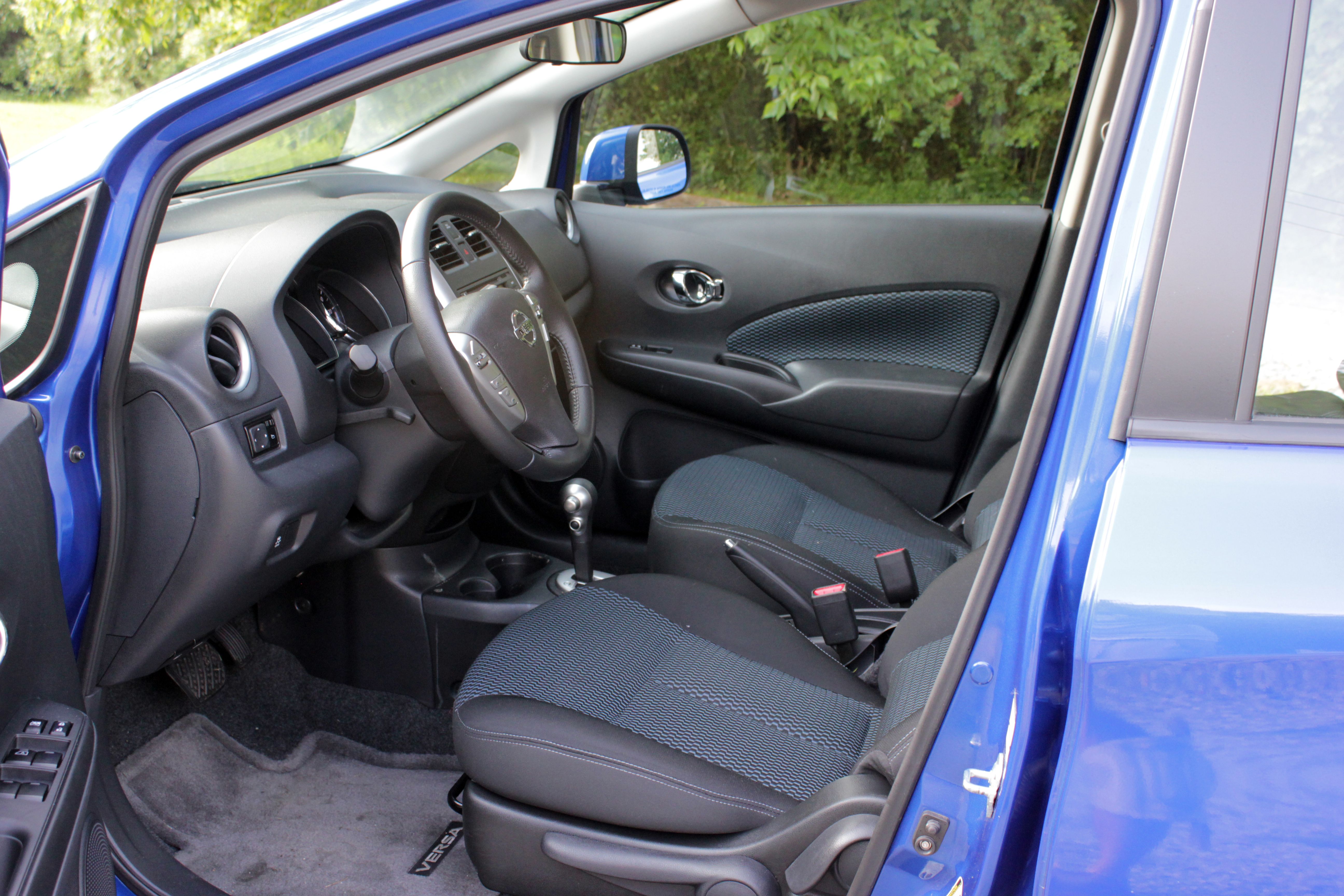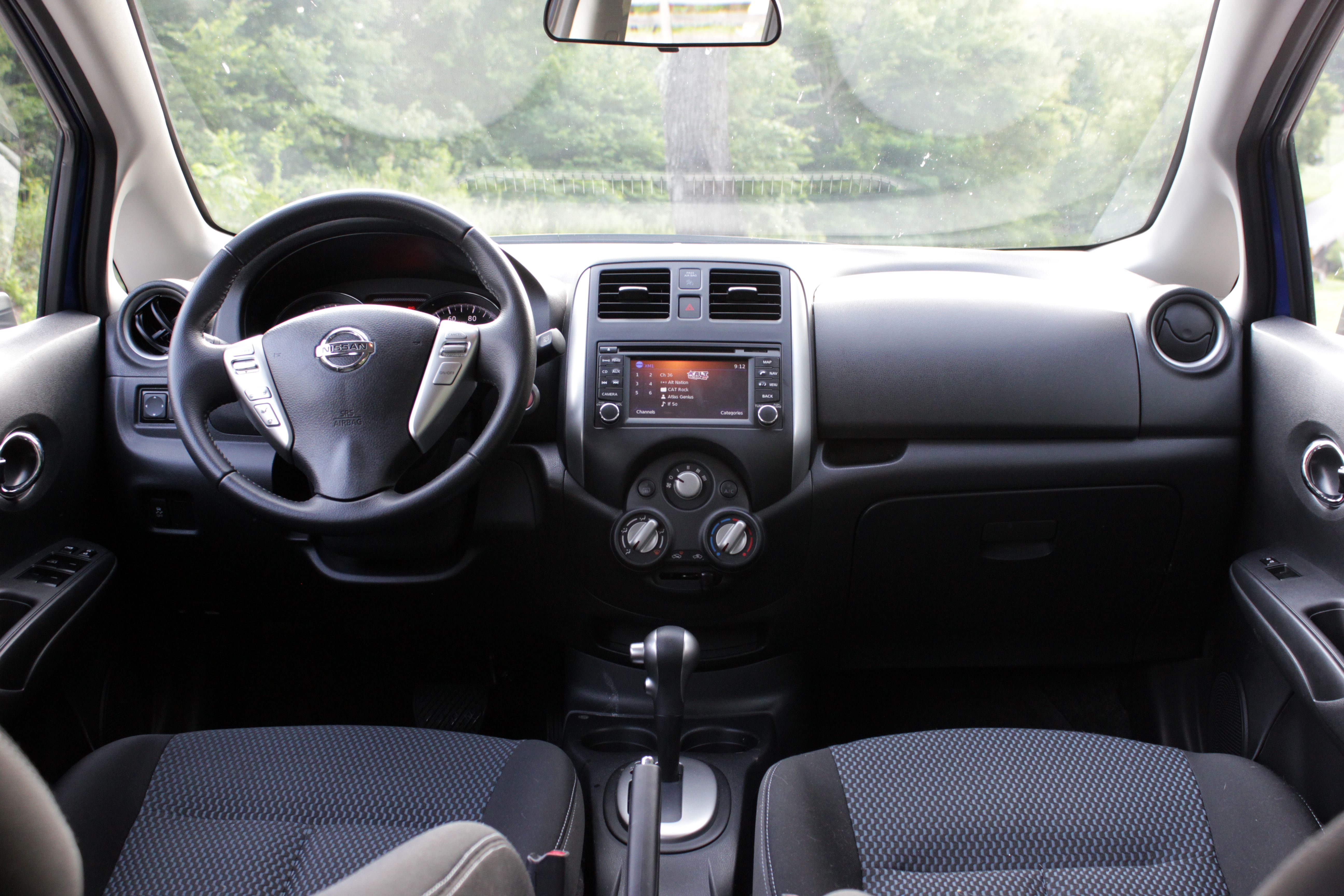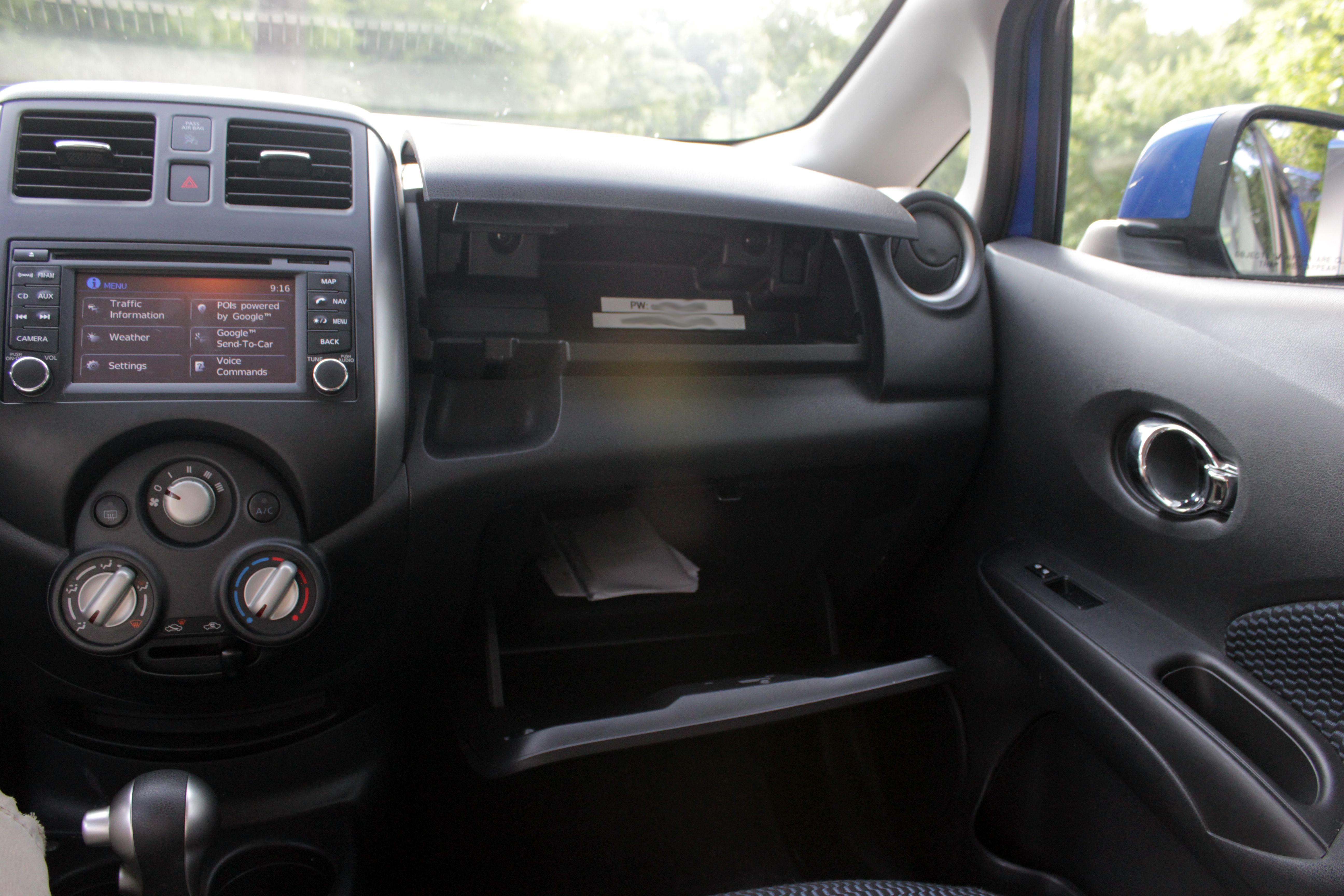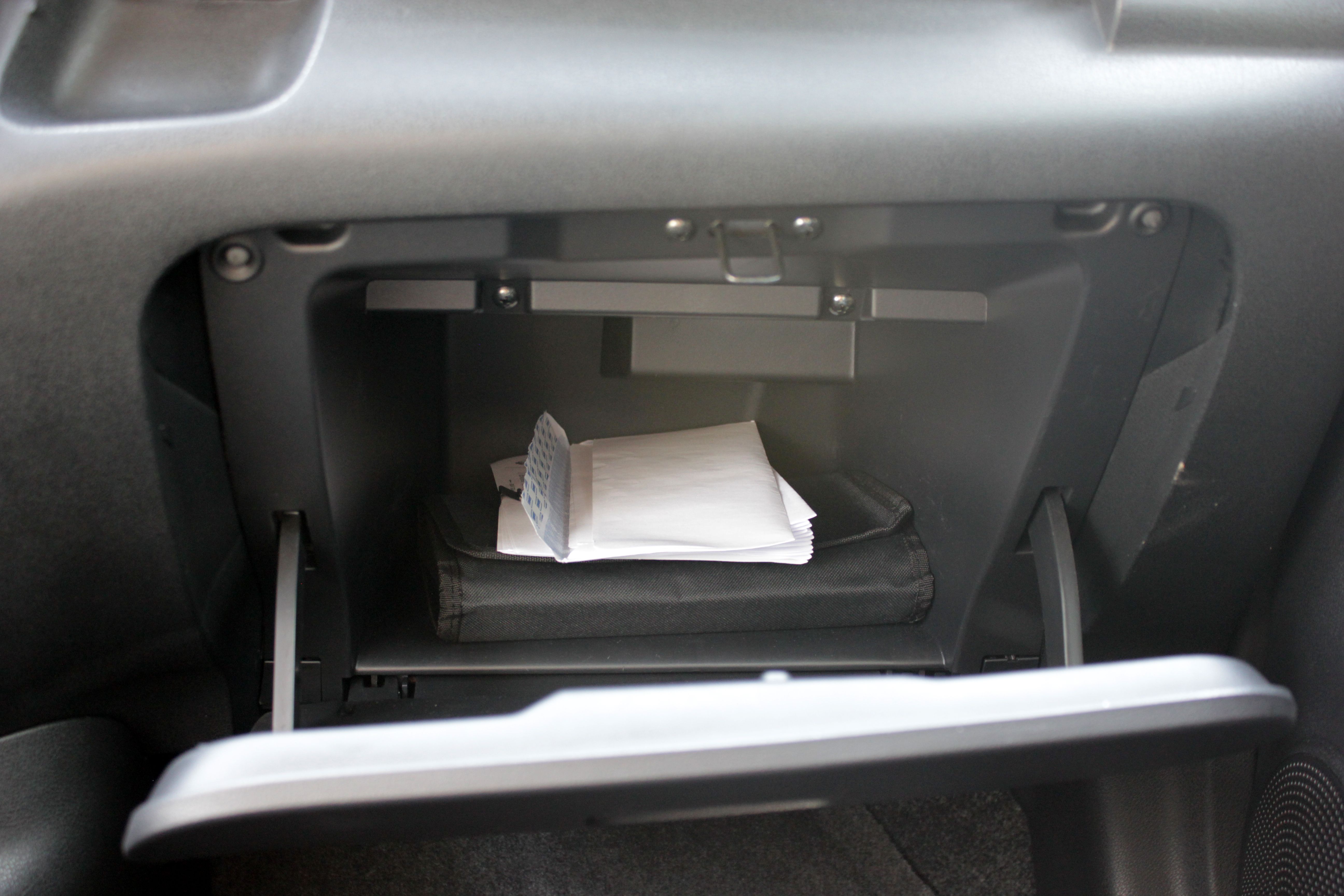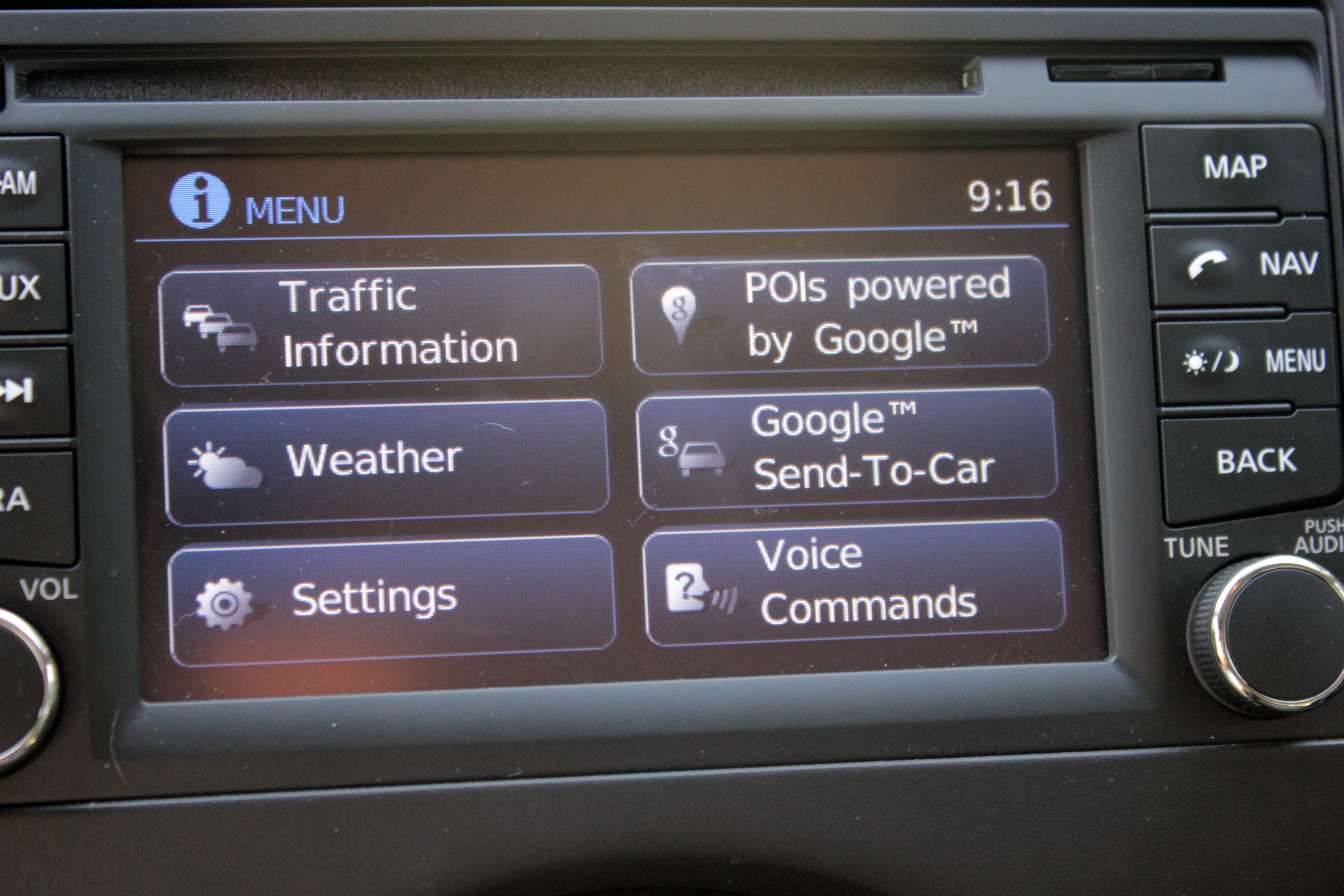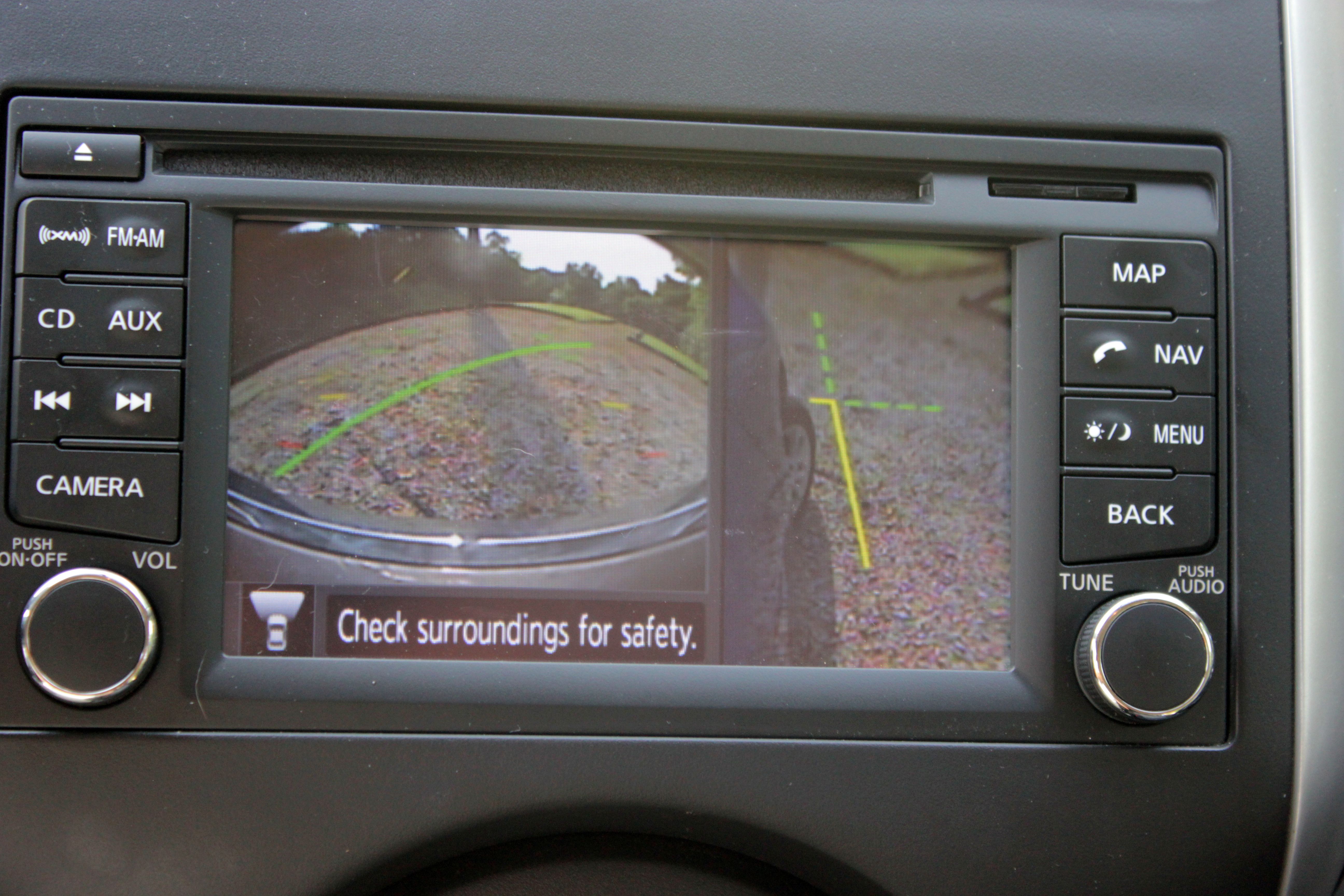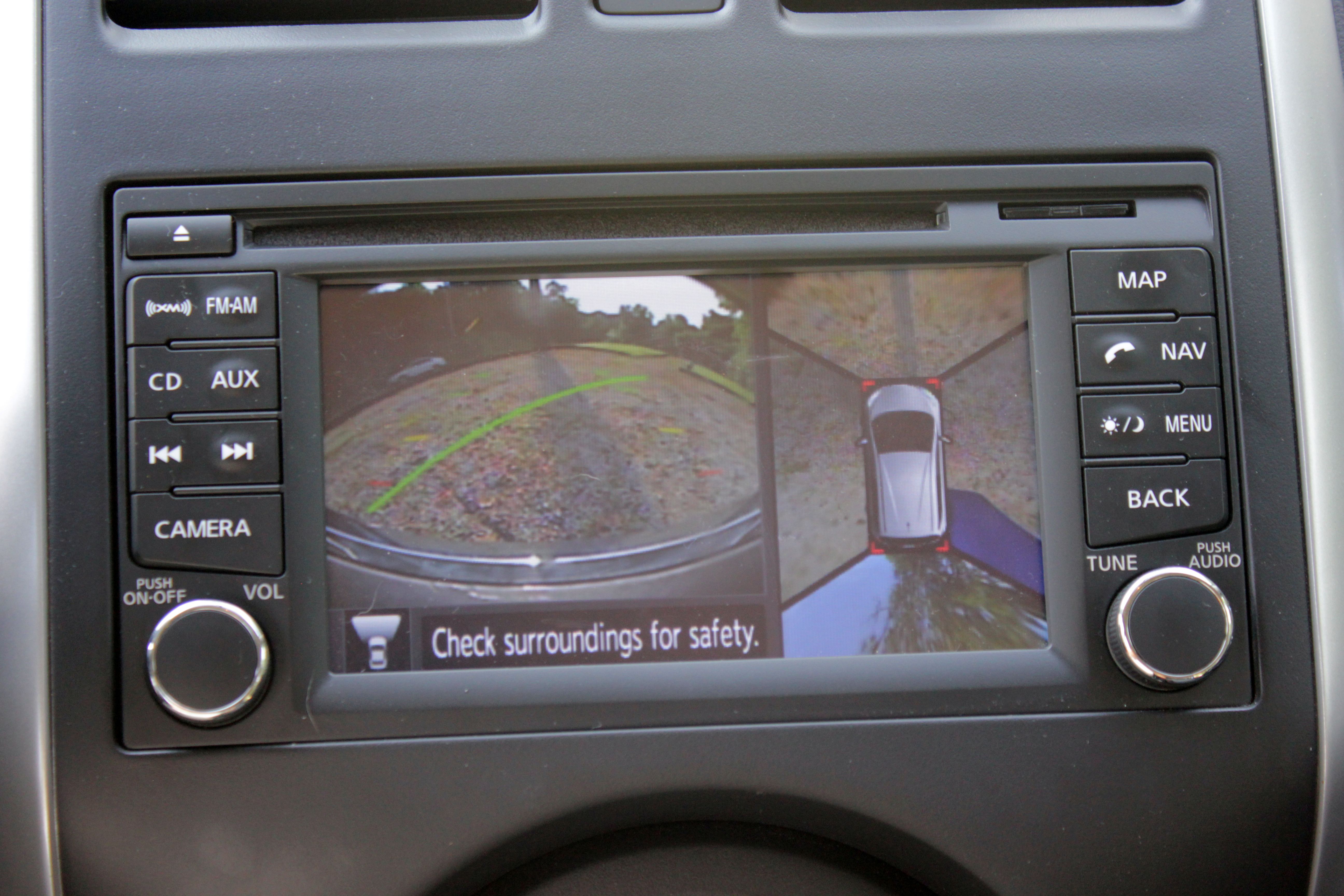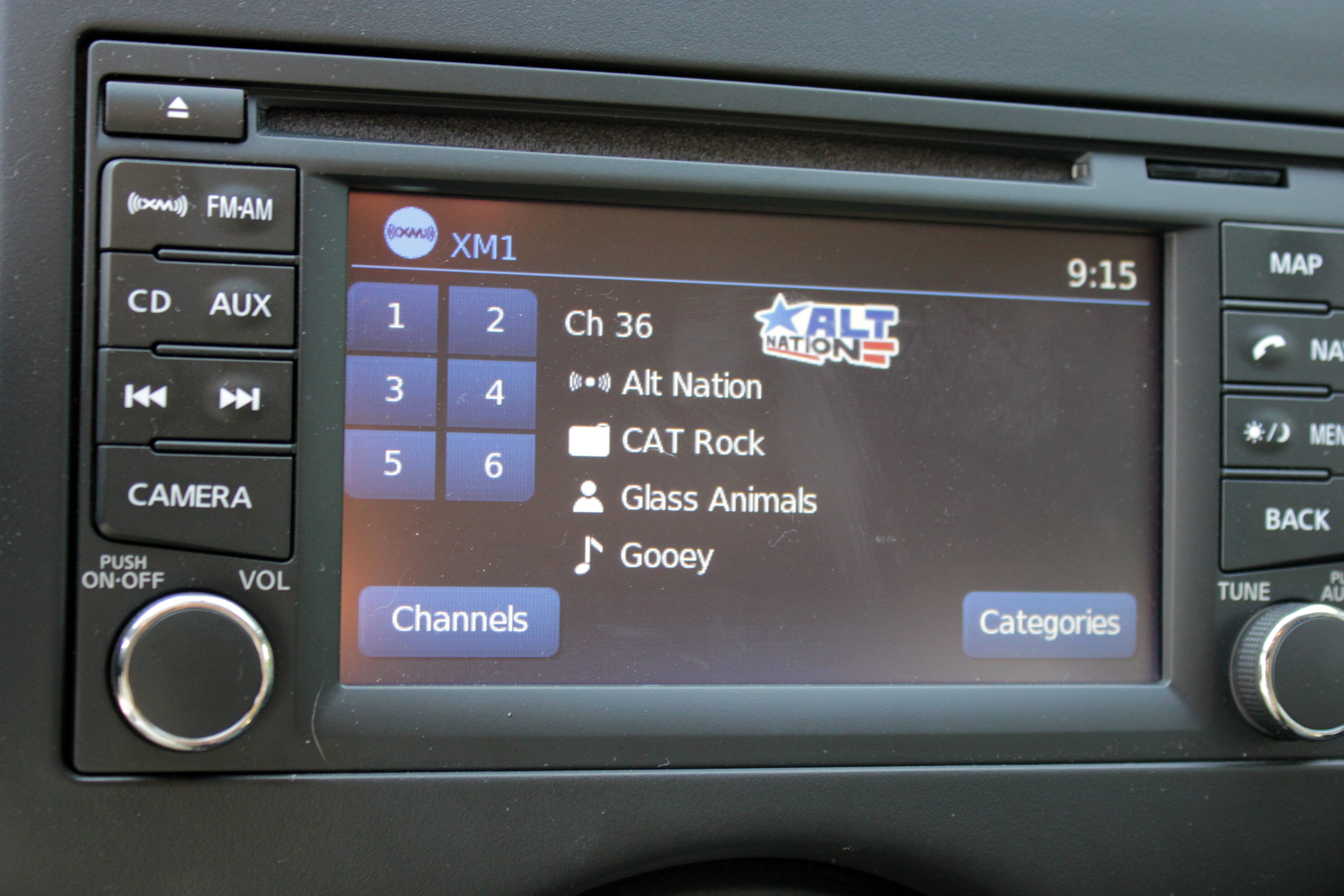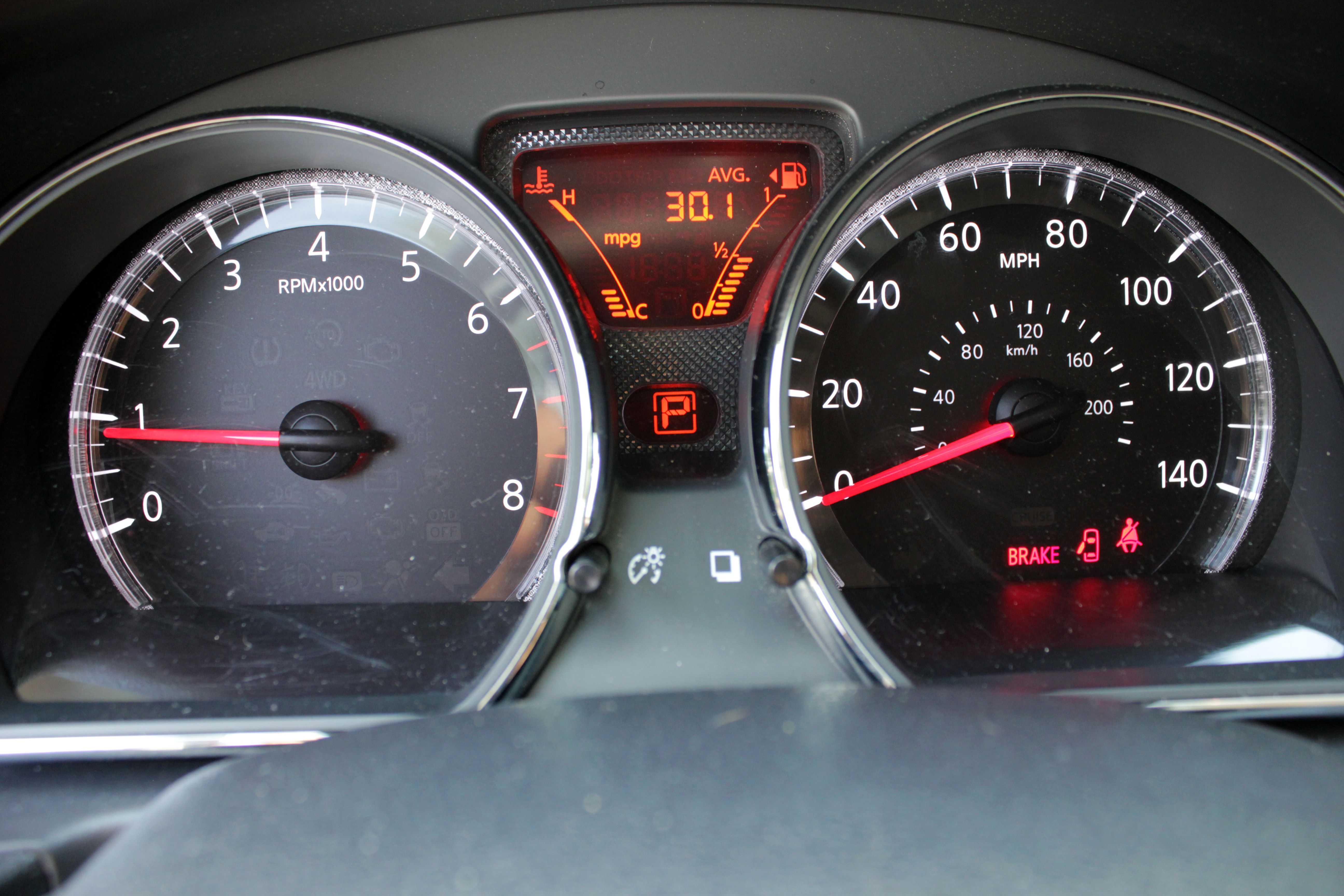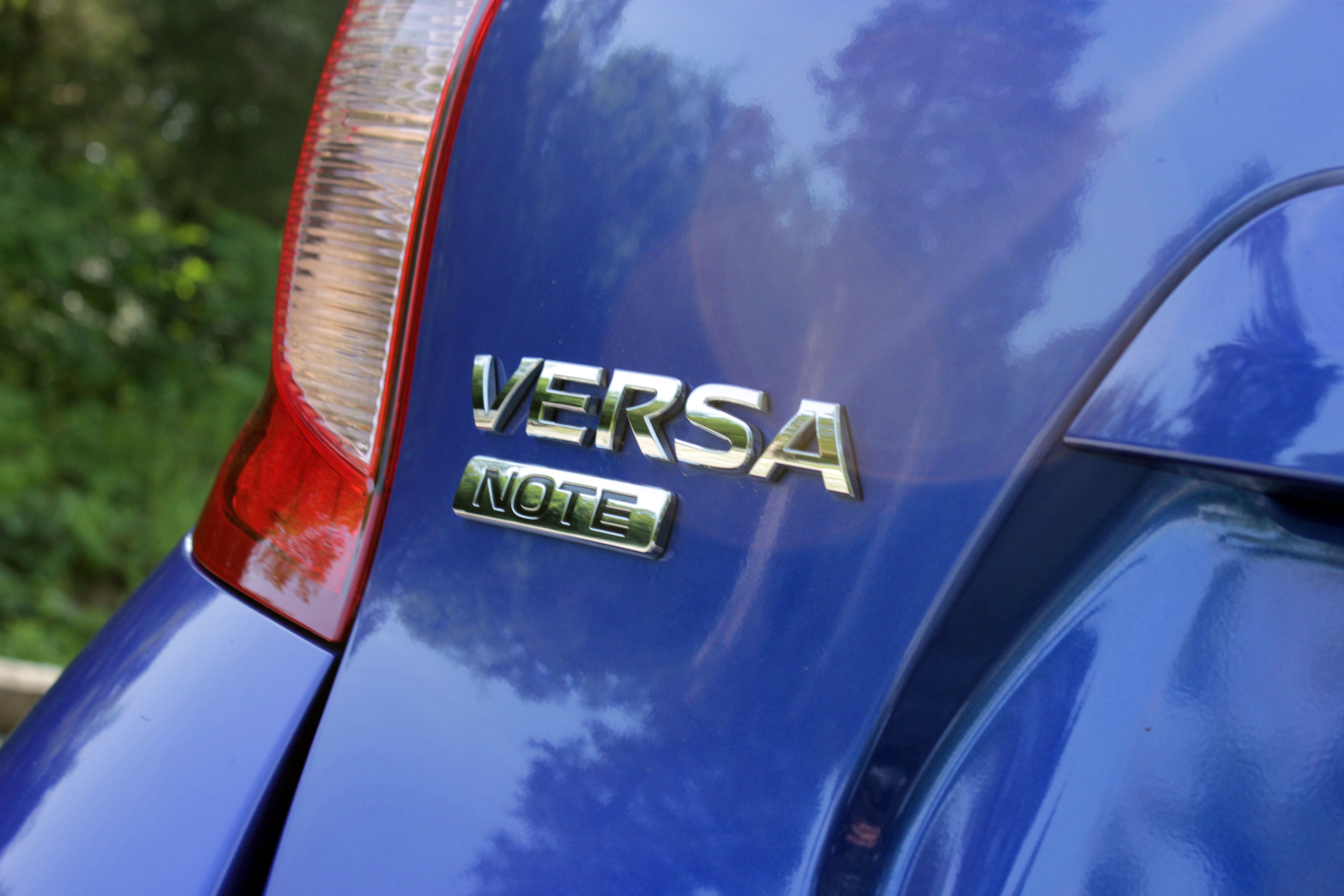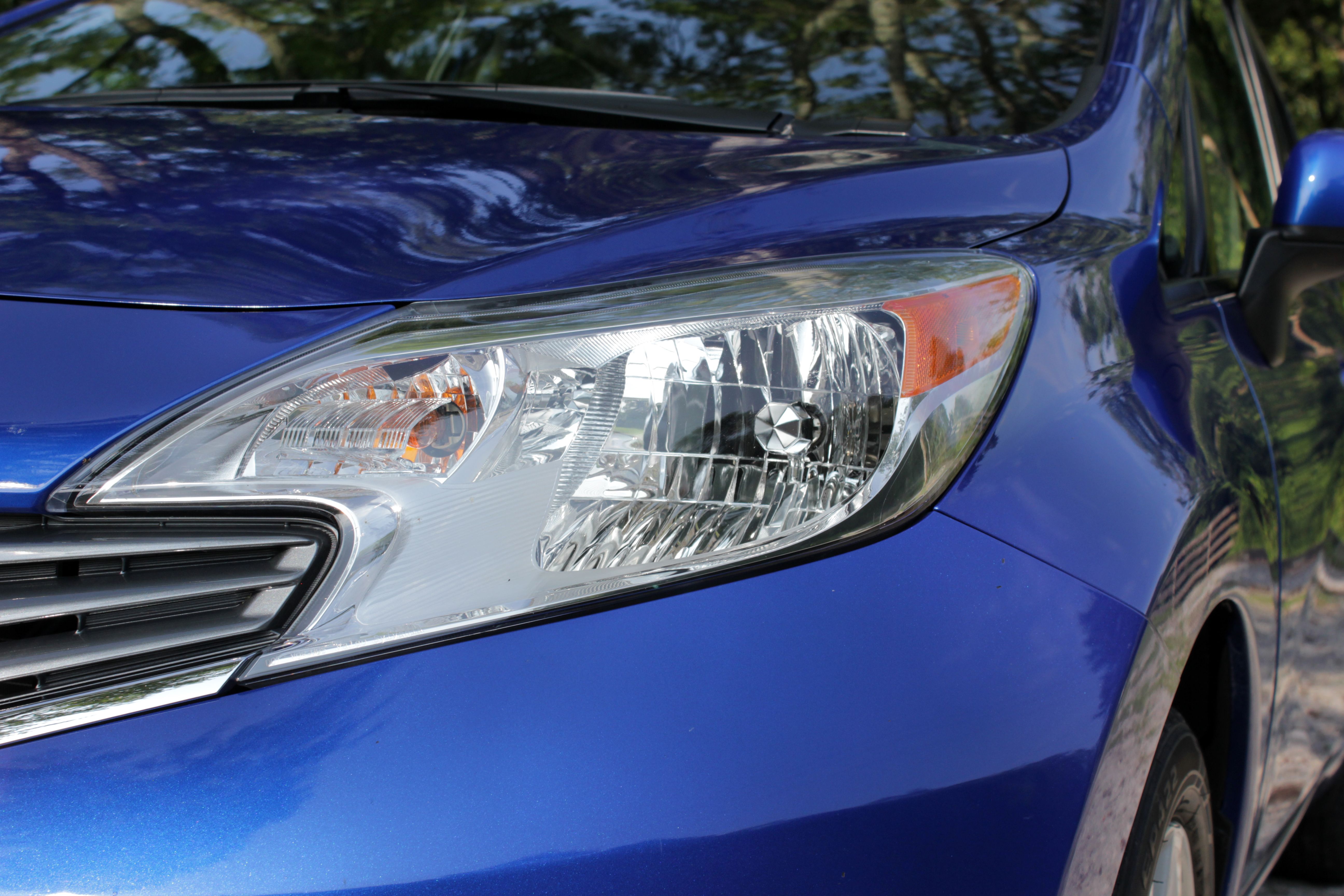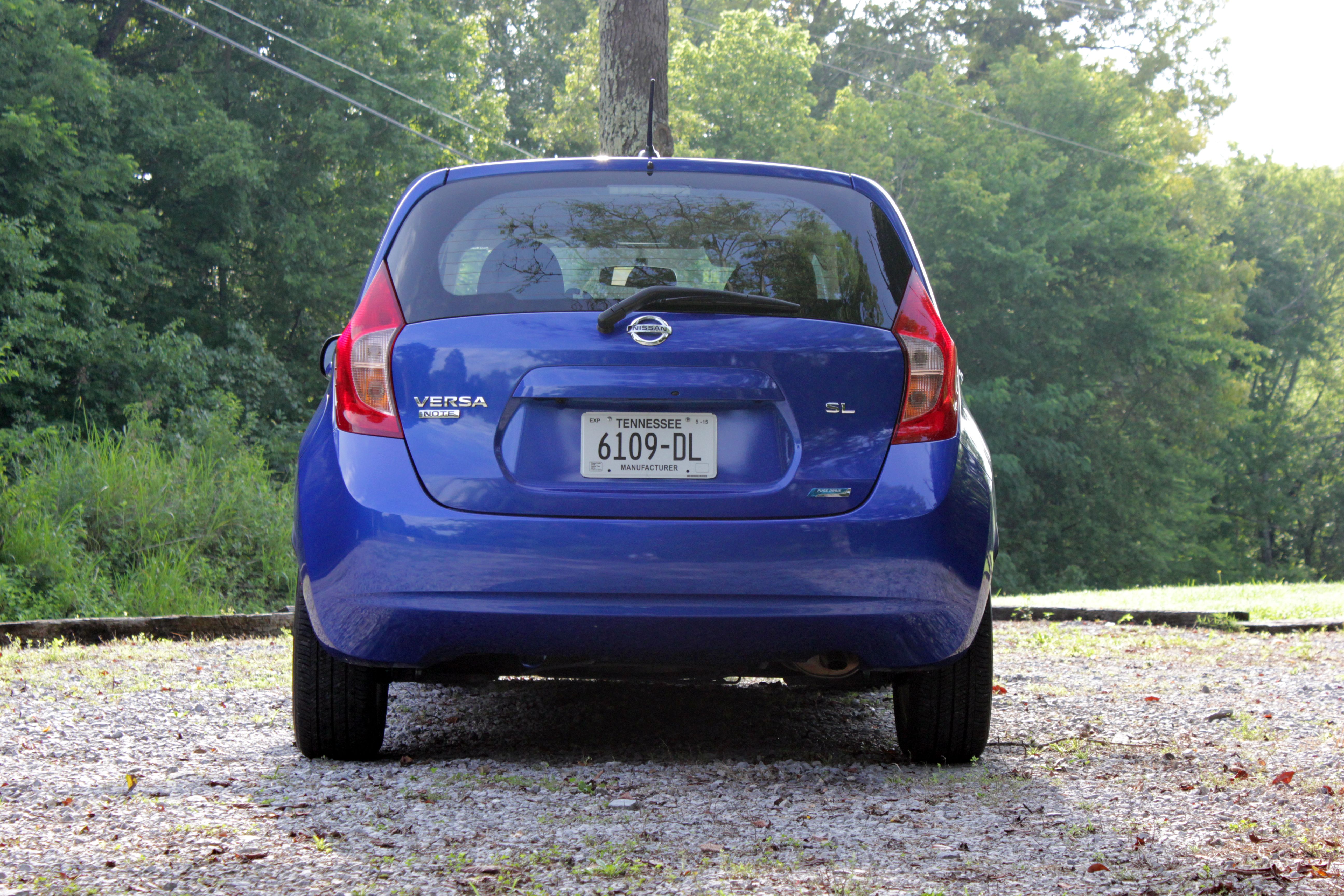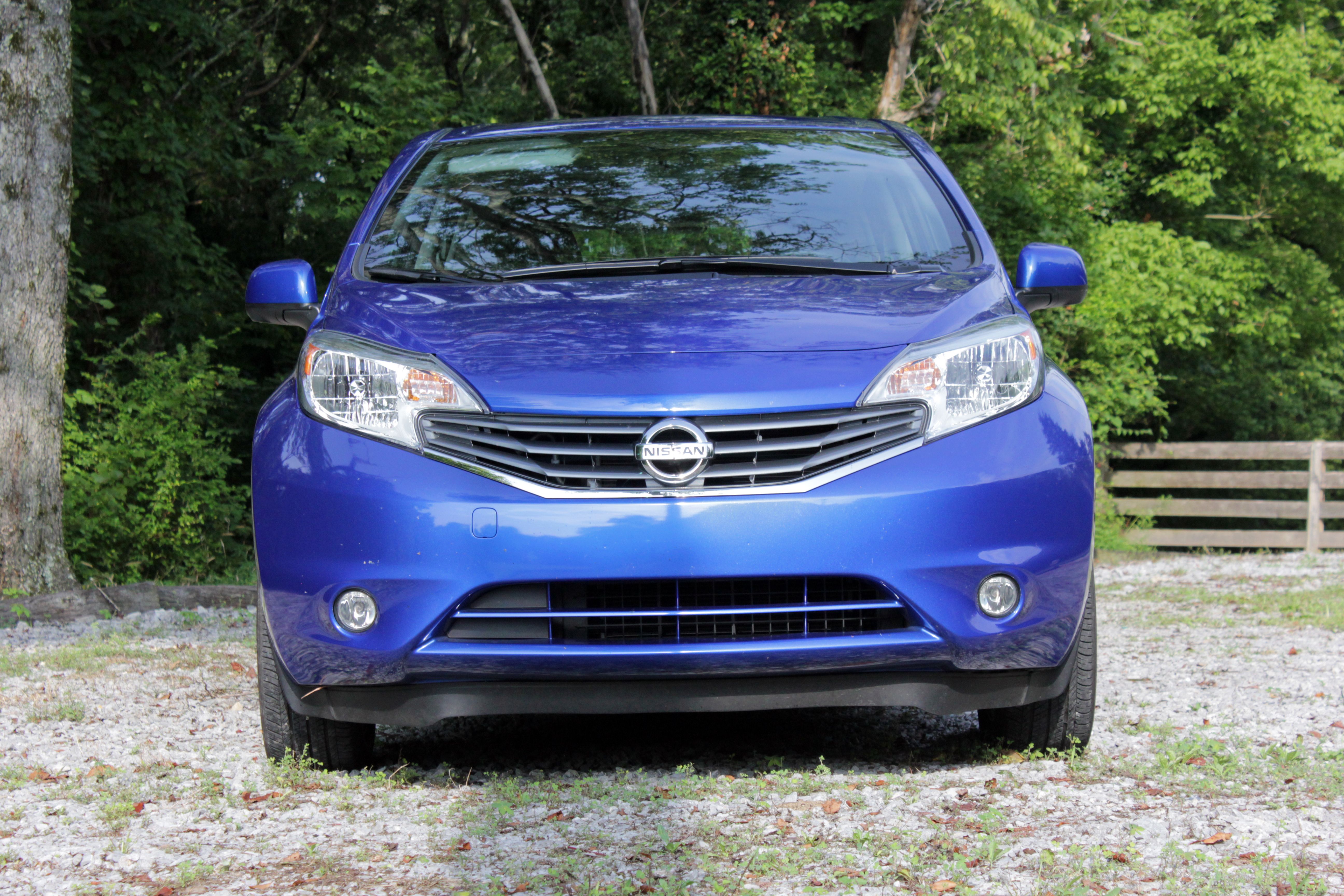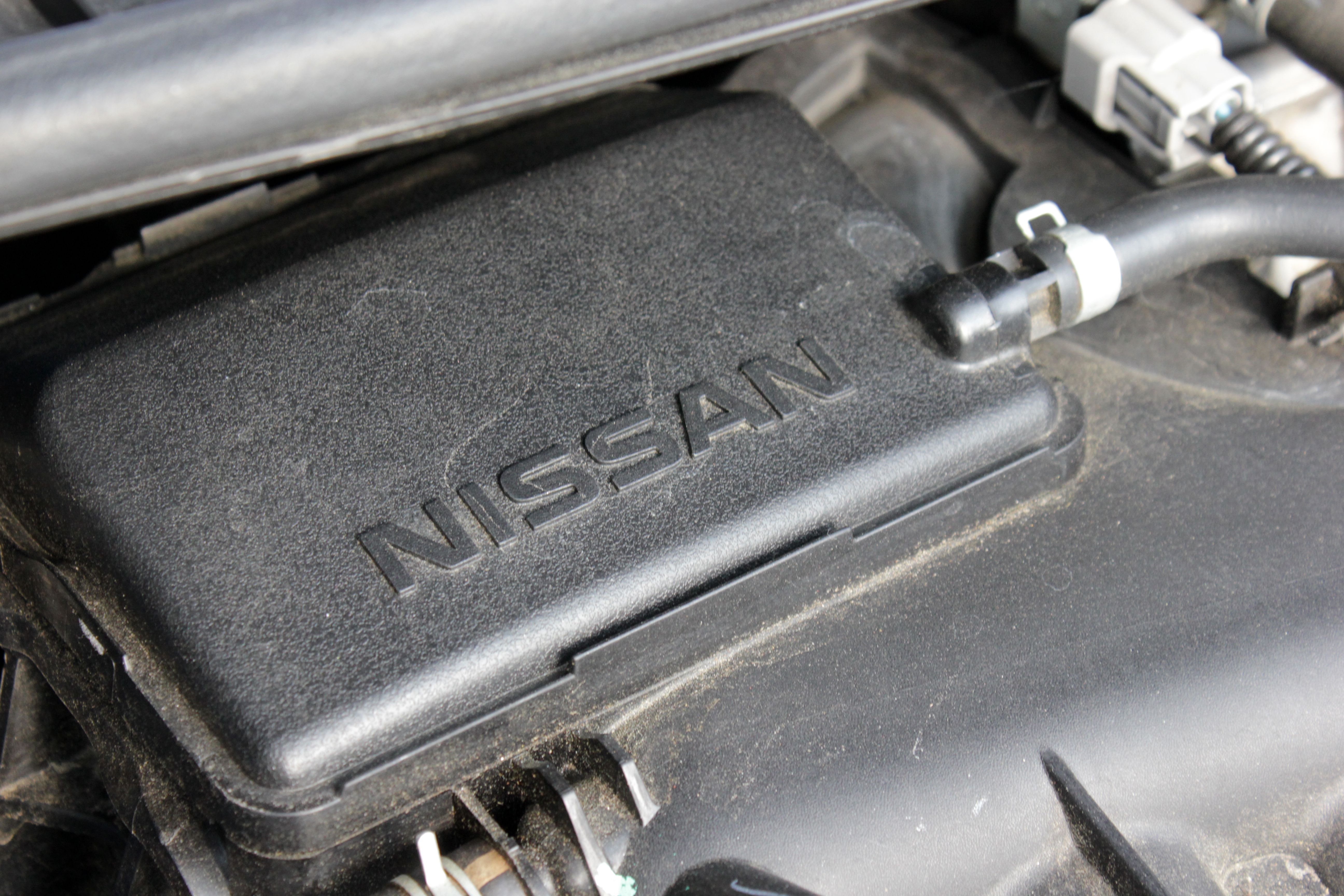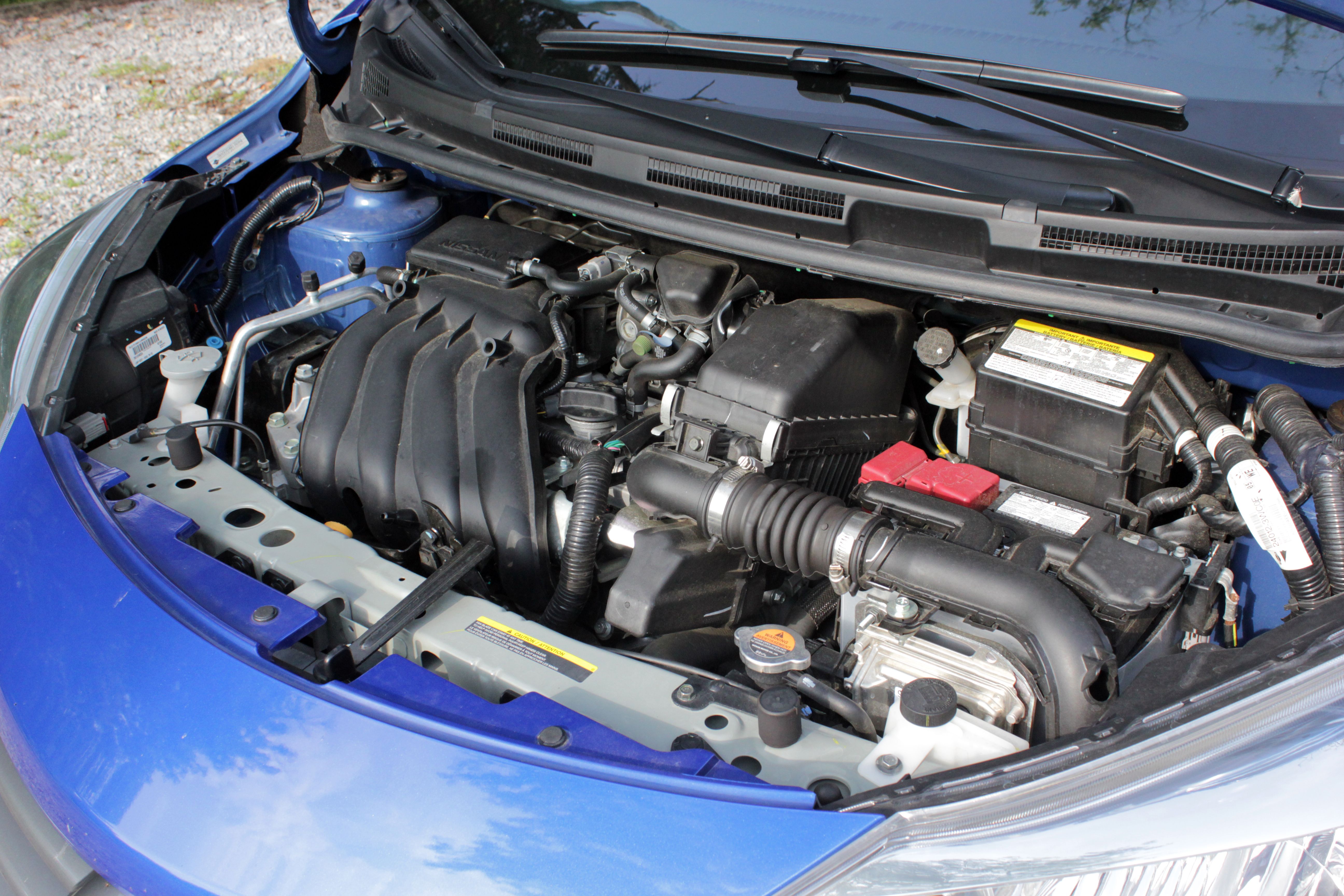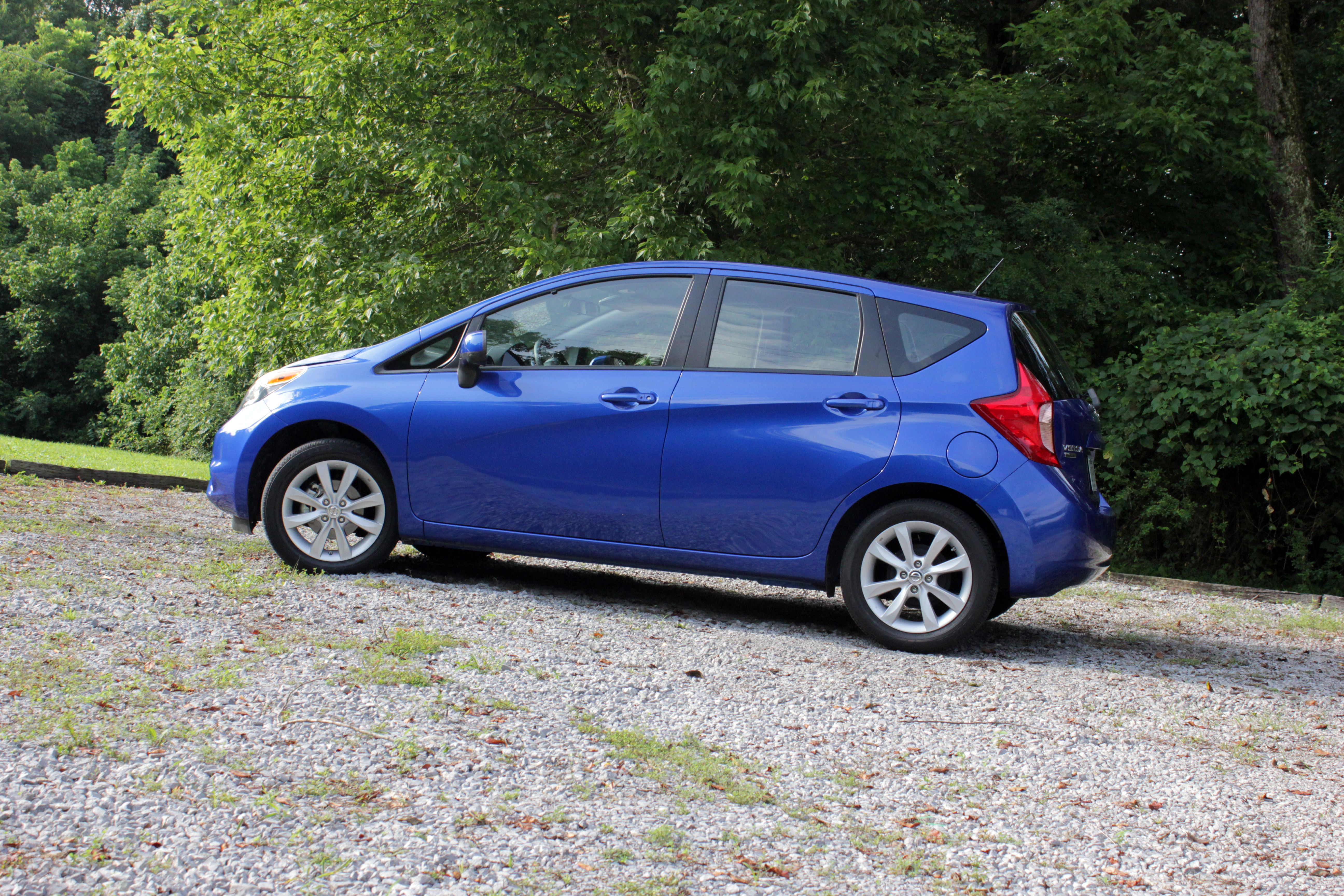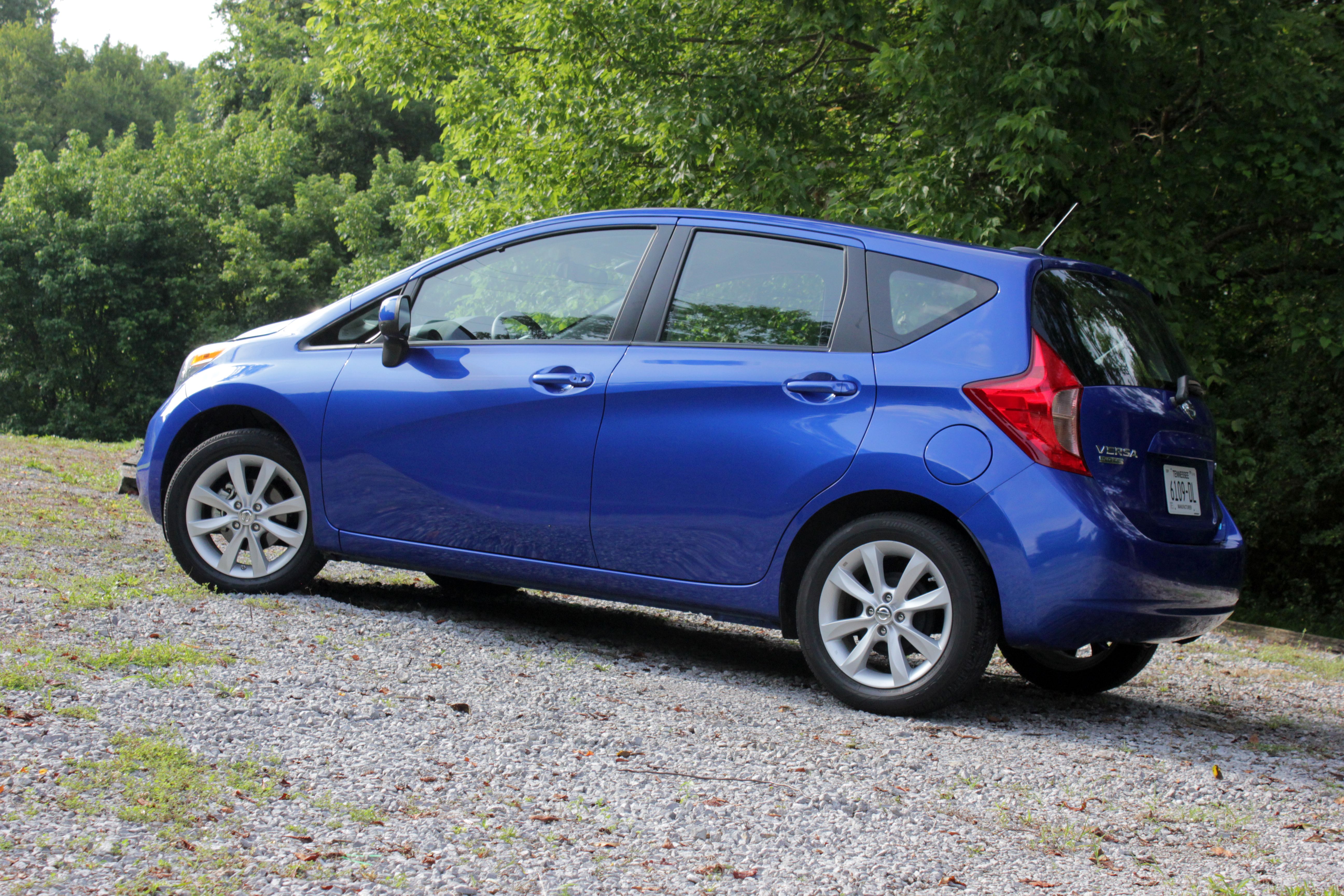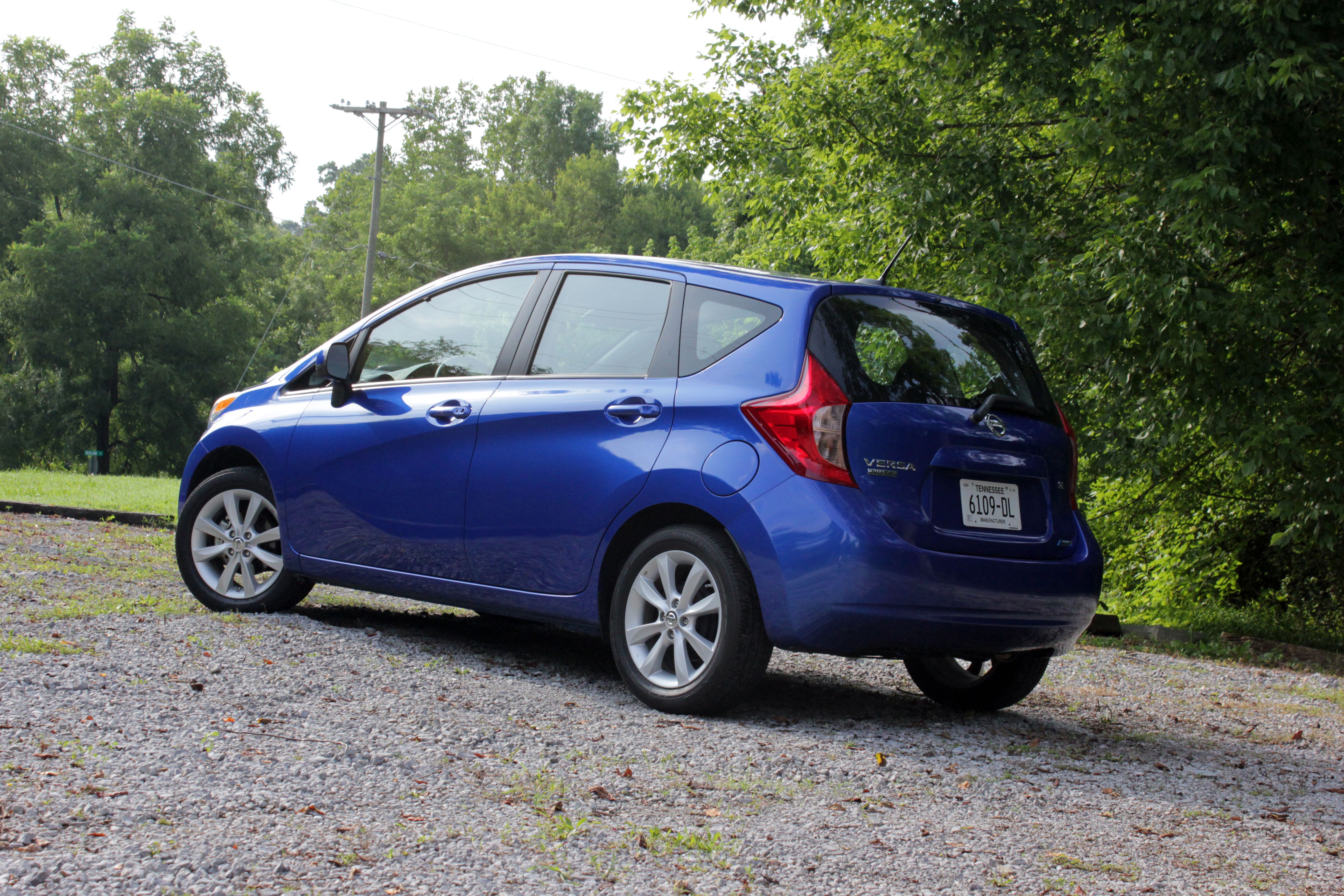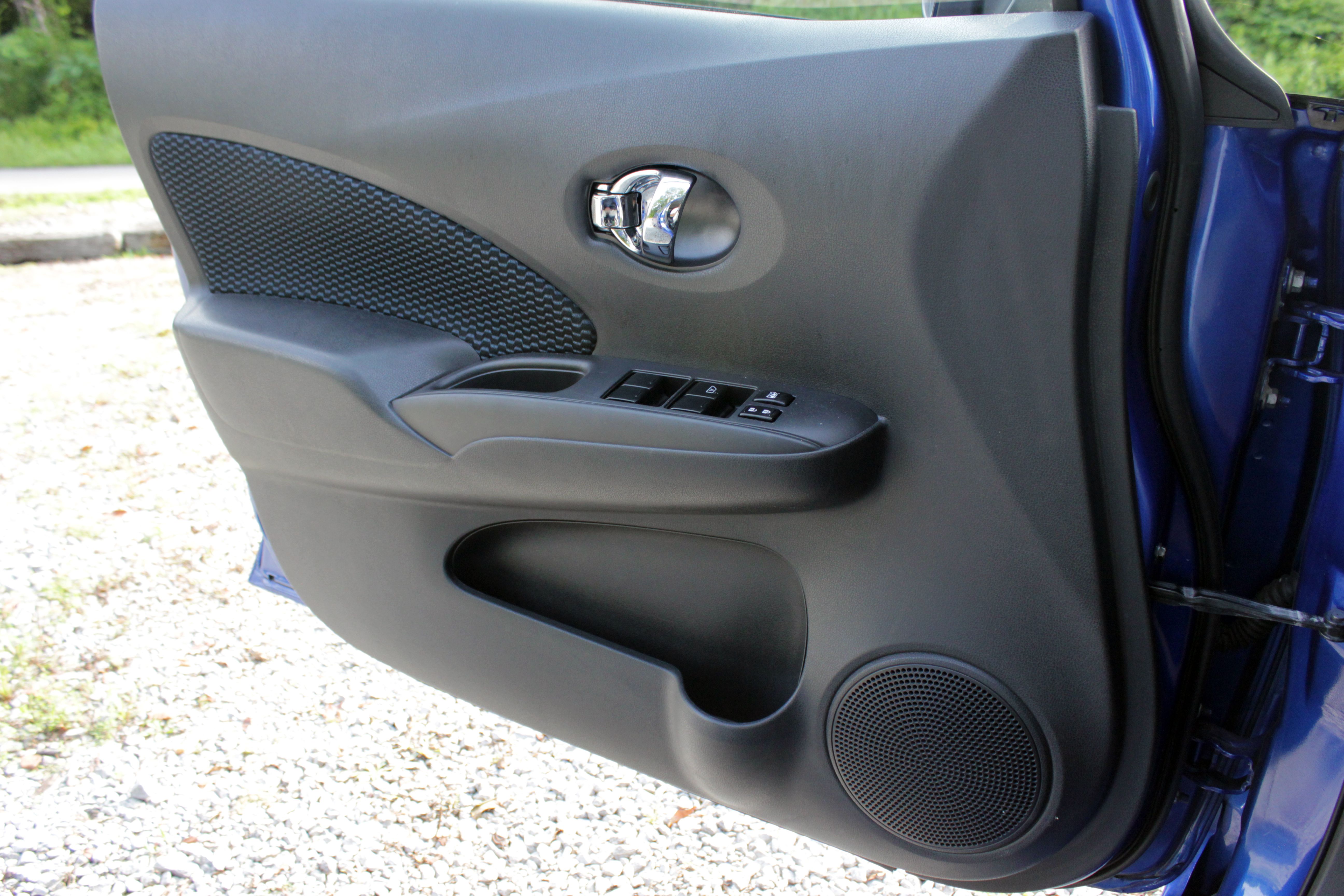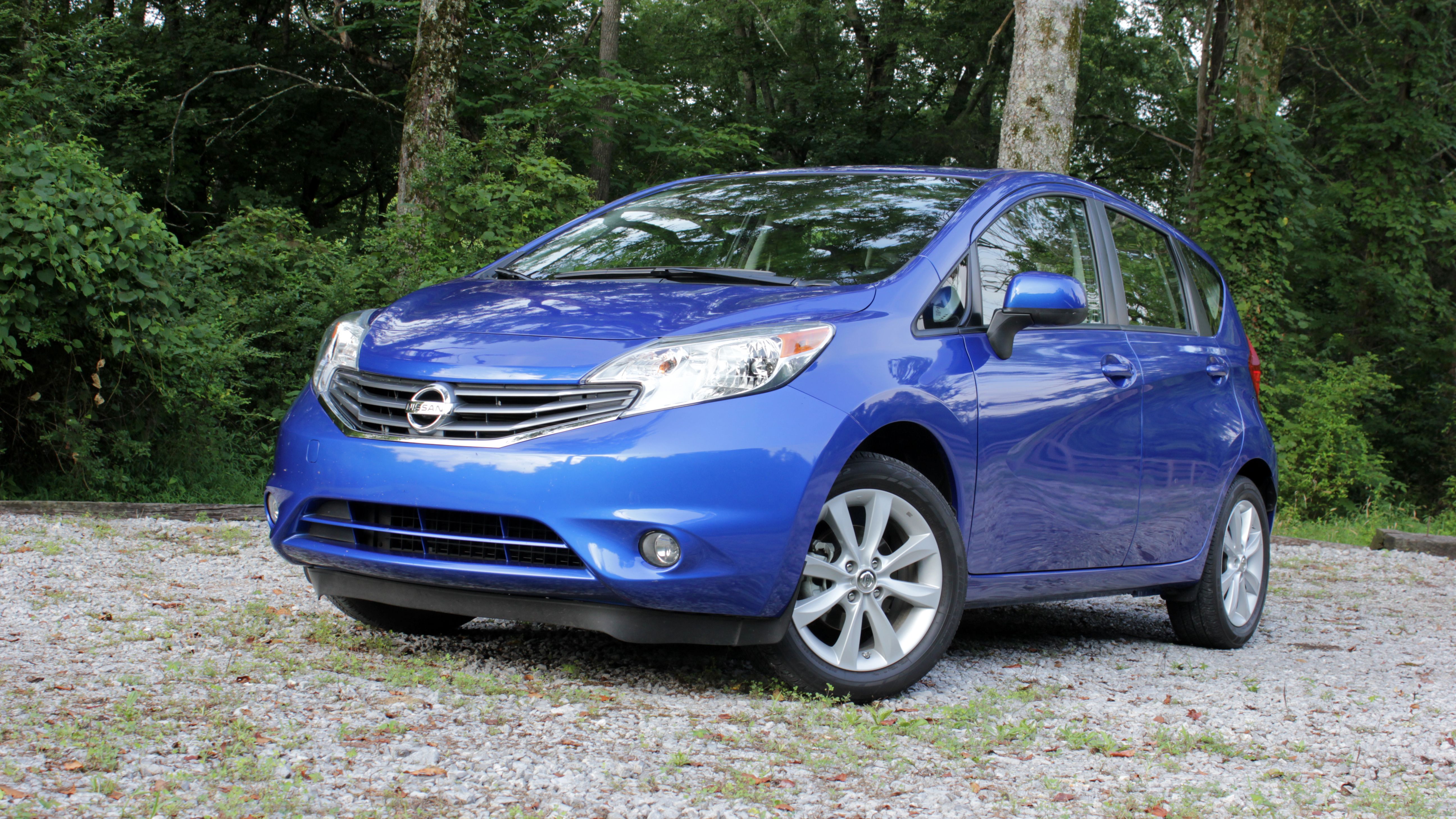The Nissan Versa Note is the smallest and cheapest hatch you can get from Nissan->ke62. It was built to provide the highest level of space and equipment for the lowest possible price. The car has been a solid seller for Nissan in the past, but for 2014 it is all-new. A new exterior shape comes to the car, along with a fresh interior design and new gadgets that have been pulled from some of the much more expensive cars in the Nissan family.
With a new design, revised equipment levels, improved interior space and the promise even better fuel economy, the Versa Note is offering a lot. Has Nissan had to cut corners on build quality and refinement to hit a price target? Will the increased fuel economy come at the cost of driving fun?
I was handed the keys to a top-level model with every bell and whistle Nissan could throw at it. Would the cheap five-door win me over, or did Nissan drop the ball with its reinvented people mover?
Read on to see what we thought about the 2014 Nissan Versa Note.
2014 Nissan Versa Note Review - Driven
- Make: Array
- Model: 2014 Nissan Versa Note Review - Driven
- Horsepower: 109
- Torque: 107
- Transmission: CVT
- [do not use] Vehicle Model: Array
Exterior
The design of the Versa Note on its own seems very attractive. There are lots of subtle curves, sharp cuts and a fair bit of sculpting. Sadly, when you compare it to the other cars in its class like the new Honda Fit, the Ford Fiesta and the upcoming Mazda2, it looks a bit like an also-ran. It is still attractive; it just doesn’t stand out as much as you might think on your first glance.
What the exterior lacks in overall panache, it makes up for in thoughtful design touches. The slightly raised and gently bowed roofline is evident in the cabin spaciousness, the stretched wheelbase improves interior volume and handling, and the large nose design improves aerodynamics.
Since we have an upgraded tester, we have a nice set of lightweight, 16-inch alloy wheels in each corner, and they are all shod with a low-rolling-resistance tires to improve fuel economy. Also included on our car are the heated side-view mirrors, and Nissan’s fancy keyless entry system. Rather than the touch sensitive areas used on most cars, the Versa uses small black buttons near the handle to operate the system. It doesn’t look as nice, but I think I prefer the buttons.
Interior
Space and practicality are key things to look for when buying a small car, and the Nissan Versa Note comes packed with both. The entire cabin felt like it was created to make it feel as large as possible. It makes great use of light and space to create an open and airy feeling.
Starting with the major things, Nissan has decided that the Versa would be focused on occupant space more than cargo space. The seat sits much farther back than competitors from Ford and Chevy, so legroom is astonishing. I have a friend who is nearly seven feet in height, and he was able to sit in both the front seat and back. When he was sitting in the front seat, I was still able to comfortably sit behind him.
Headroom is also great, thanks to a few smart tricks. For starters, the actual roofline of the Versa Note is a little high and slightly arched. This increases the amount of space available, but then engineers also molded the headliner around the support structure of the car, so the ceiling directly above the passengers is another 3/4-inch or so higher than it otherwise would have been.
Since sliding the rear seats back takes up valuable trunk space, Nissan had to come up with a few unique designs to increase cargo volume as much as possible. The most noticeable one is the lowered floor. The rear cargo floor of the Versa Note is actually a two-step platform. You can fold the platform down into the floor to create a well that sits below the rear bumper to increase vertical storage space. If you need to haul larger items, fold down the seats and raise the floor to create a flatter load surface. If you need maximum utility, fold the seats and leave the rear floor in the down position.
Nissan also relocated the spare tire to make as much room as possible. You can find it mounted under the rear of the car.
For smaller storage, the Versa Note has lots of nooks, crannies and pockets to put things, and even features a dual glove box setup in the front.
The Nissan Versa Note is a car that is both small and cheap, but Nissan made sure it didn’t skip out on offering some really cool technology. You can get the exact same stereo head unit with crisp display and navigation as what you get in the larger and pricier Nissan Altima. It even still comes with the same cool Google Send-To-Car and POI functionality of the Altima. More than that, Nissan has even been kind enough to offer the incredible Around View monitor system that it pioneered on Infiniti products. This system uses a collection of four cameras mounted around the car to give you a virtual overhead view of the Versa. This makes tricky parking maneuvers incredibly easy.
Drivetrain
Powering the Nissan Versa Note is a small, naturally aspirated, 1.6-liter four-cylinder. It produces a modest 109 horsepower and 107 pound-feet of torque. It’s not a lot, but with a curb weight of less than 2,500 pounds, it is enough grunt to hustle the little Nissan around at a reasonable pace. With an almost empty tank, and no other passengers, I was able to time the 0-to-60-mph sprint in about 10 seconds. It won’t take your breath away, but its not the fastest thing on the planet.
To get that power to the ground, Nissan has mated the 1.6 to a CVT transmission that sends those 109 ponies to the front wheels. This transmission is the weak link in the car for me. It is one of the poorer implementations of a CVT I have used.
Nissan claims that with the CVT, the Versa can manage an EPA-rated 40 mpg on the highway and 31 in the city. During my testing, I only managed a paltry 30 mpg average.
Driving Impressions
I think there is a reason for the poor fuel performance, and it comes down to that CVT. While Nissan has done a great job pushing CVT technology to make them very driveable, the Versa Note feels like it is saddled with a first-generation model. Thanks to aggressive tuning for maximum fuel economy, the Note will drop revs as fast as it possibly can to get to its final ratio. It also doesn’t want to downshift readily either. What resulted was a constant fight with the throttle to maintain a given speed.
Introducing elevation changes exacerbated this. Basically the car would refuse to use a lower ratio with mild throttle inputs when going up a hill. I would apply more throttle to compensate and the car would finally react by launching my revs to redline and hurtling the car forward as fast as possible. When I let off the gas even slightly to try and slow down, the car would immediately switch back to the highest ratio available on the CVT and I would lose power again. This Versa Note begs for a manual transmission more than basically any car I have ever driven.
Not only would a manual help with overall driving dynamics, and potentially fuel economy, it would make the Note a properly fun thing to drive. Thanks to that very low curb weight, and a wheelbase that is stretched to length of the car, the Versa is a very nimble car. Steering is light, but it reacts quickly and the Note is happy to change directions as soon as you ask. The entire car feels nippy and happy to be flogged. From turn to turn, the Note would fling itself into the corner and hang on to all the grip it could from the slimy low-rolling-resistance tires. It was a blast. The only downside was that CVT.
Once I finally found a straight and mostly level piece of tarmac, the Versa settled into a grove. Considering its price point, I felt that NVH was well controlled, and most commuters shouldn’t be overly annoyed by the sounds that enter the cabin. Ride quality over broken pavement is more than acceptable and the large windows improve visibility to make navigating a busy interstate easier.
Price
The Versa Note is an incredibly aggressively priced machine with a base MSRP of just $13,990. Our tester was the higher trim level SV car that starts at $15,990. To add to that price, we had the SL and Tech Packages. The SL package added things like 16-inch alloys, rearview camera, Nissan Intelligent Key, fog lights, heated seats and more. It carries a price of $1,700. The Tech Package is another $800 and it adds that large navigation screen and the Around View Monitor. After all was said and done, our car came to a total price of $19,545 after destination. Considering the quantity of space and equipment, it seems like a pretty solid deal.
Competitors
Honda Fit
When it comes to getting as much space in the smallest car possible, the Honda Fit is basically the king of the class. For the same price you can get a get a Honda Fit that is comparably equipped to my Versa here. You don’t get the fancy Around View Monitor, but you do still get navigation, and the Fit has leather seating.
It is hard to split them on performance as well. Both are sold with relatively small powerplants, but the Fit is around 1.5 seconds faster to 60 mph, thanks to its extra 21 horses and 7 pound-feet of twist. Thanks to the tuning of the suspension, the Fit does handle a little better, but it is not dramatically better than the Versa.
The biggest split between them is space allotment. The Versa is better at moving people, while the Fit is better at moving cargo. What it will likely come down to for a potential buyer is brand loyalty as both cars are so evenly matched.
Ford Focus
Trying to pinpoint the competition of the Nissan Versa is actually a bit difficult. It’s price places it square against cars like the Ford Fiesta and Chevy Sonic, but its size makes it a better competitor to larger cars like the Focus.
A Focus with equipment like navigation will cost you a few thousand dollars more than the Versa, but it does feature a better interior and more advanced technology with systems like MyFord Touch. The Ford also takes the award for most customizable car with multiple wheel design and size options, as well as a larger collection of exterior and interior colors.
Thanks to a more powerful engine, the Focus will be quicker and handle better, plus it has the option for a manual transmission. If you want more space on a budget, the Versa is the clear choice. If you want more speed and refinement, the Focus is a good choice, but it will cost you more money.
Conclusion
When the Nissan Versa Note arrived at my house, I was interested because I like small cars, but when I saw that it was loaded with fancy tech, I prepared myself for disappointment. Too many small cars today seem to focus on giving you as many gadgets as possible, and usually the rest of the cars build quality and driving dynamics suffer for it.
Thankfully, the Versa seems to avoid that with an overall feeling that it is well designed, and relatively well built. Power is adequate, the chassis is willing to be driven hard, and the technology included feels very useful and not at all superfluous.
For a full list price of less than $20,000 dollars, the Versa Note is basically a steal. The only it needs to be perfect is a better transmission.


